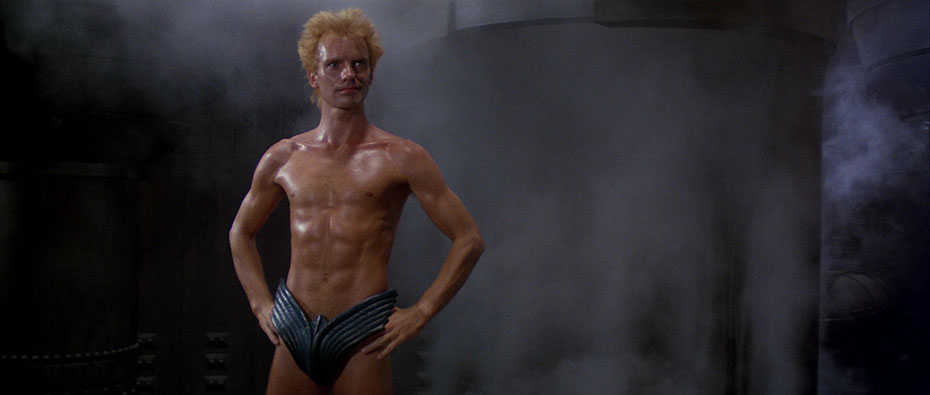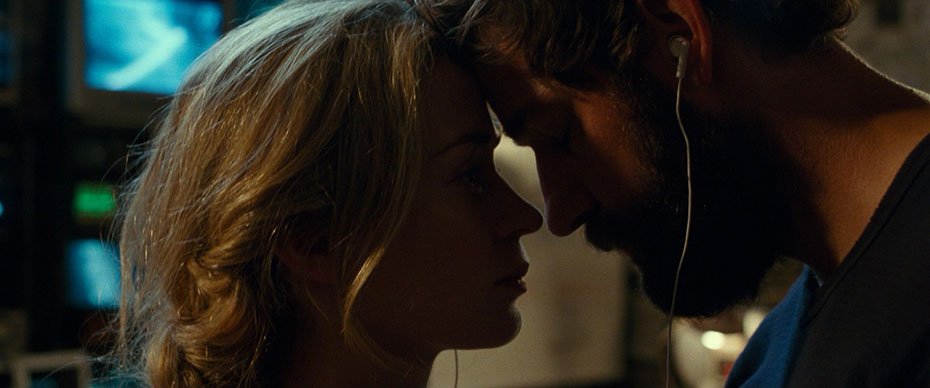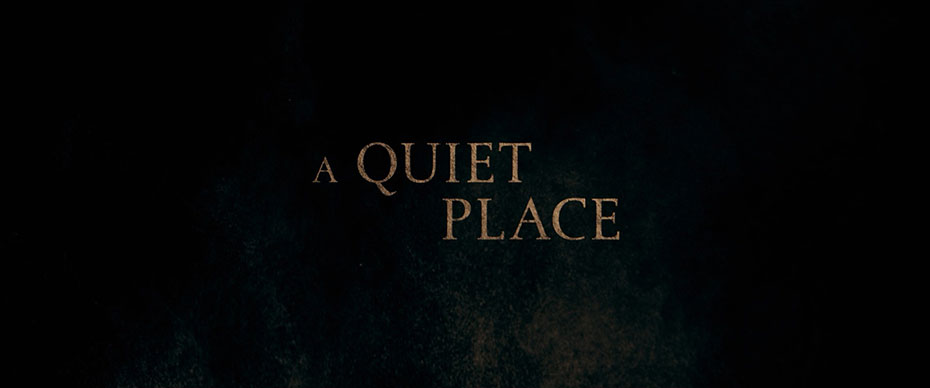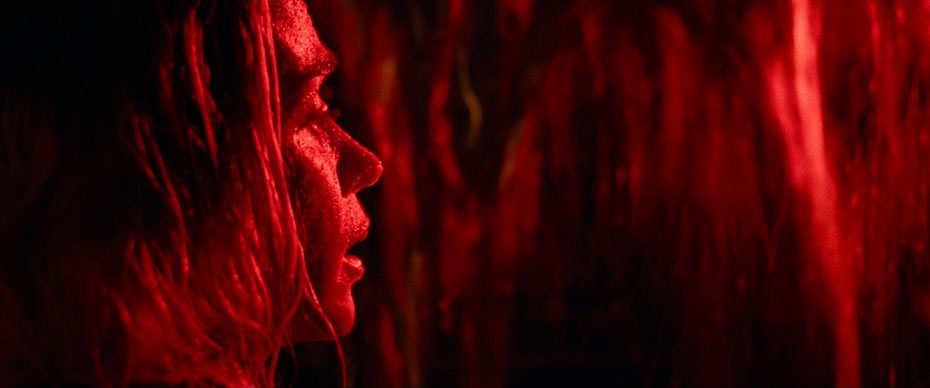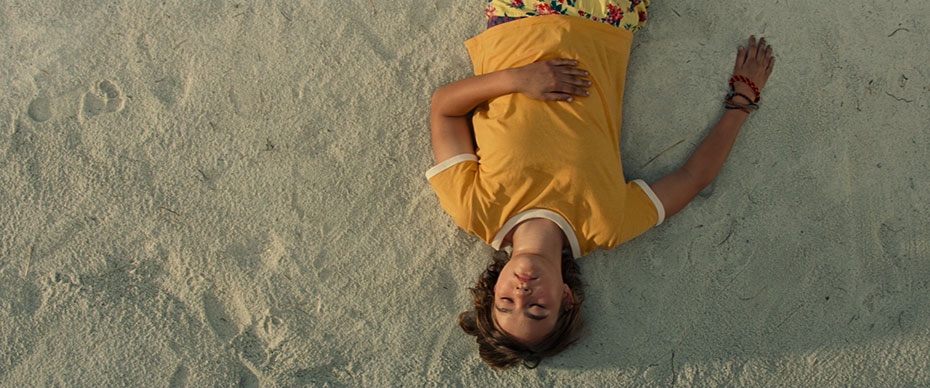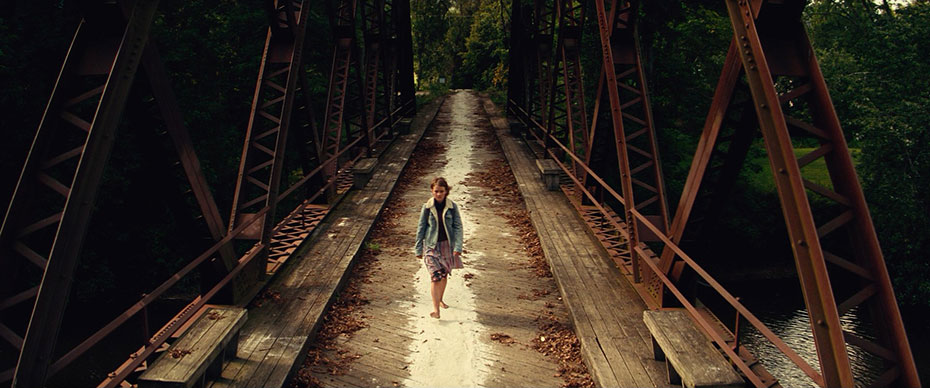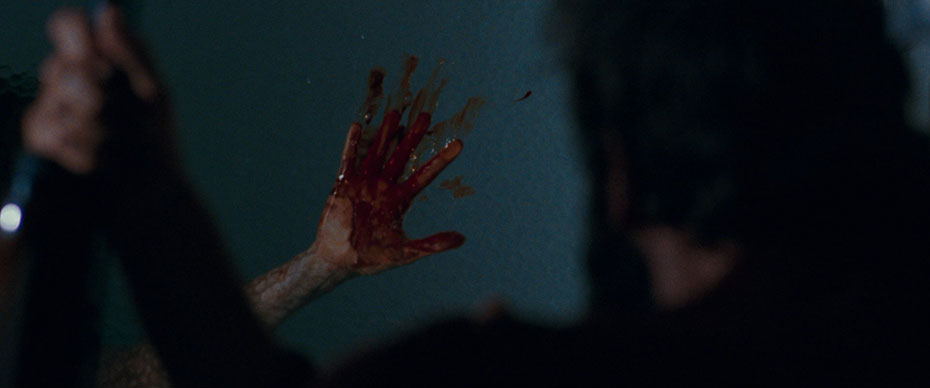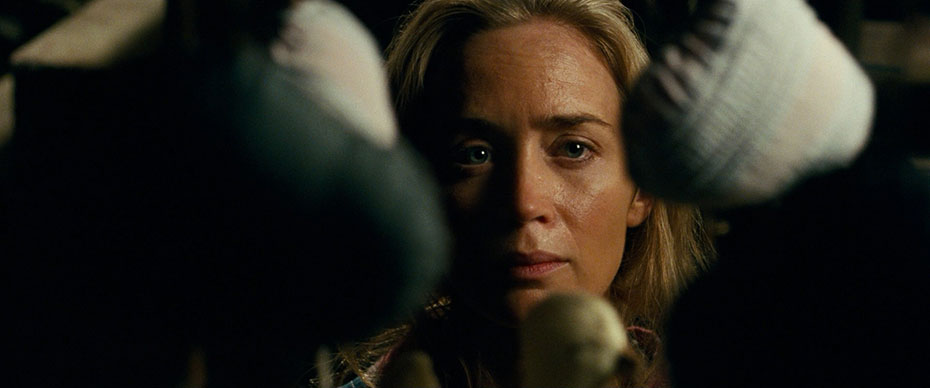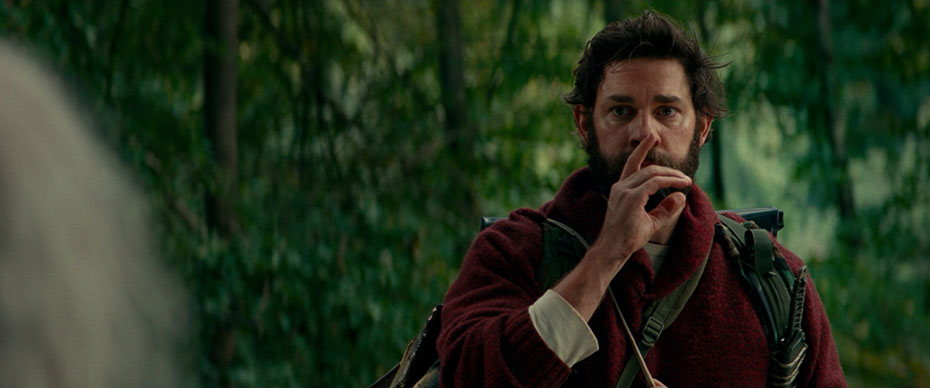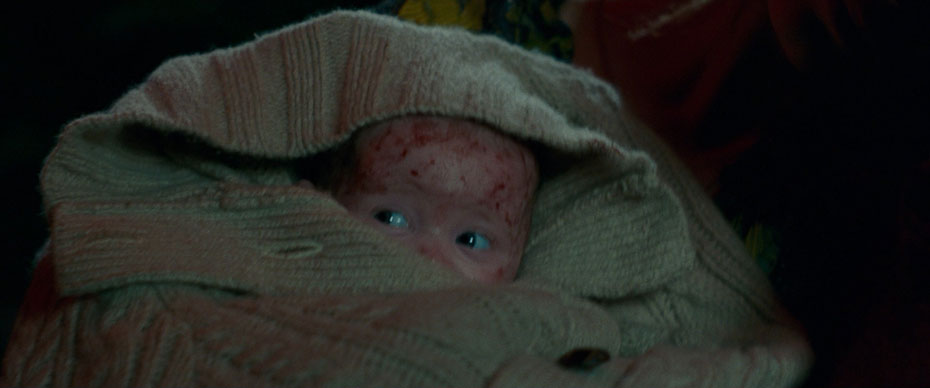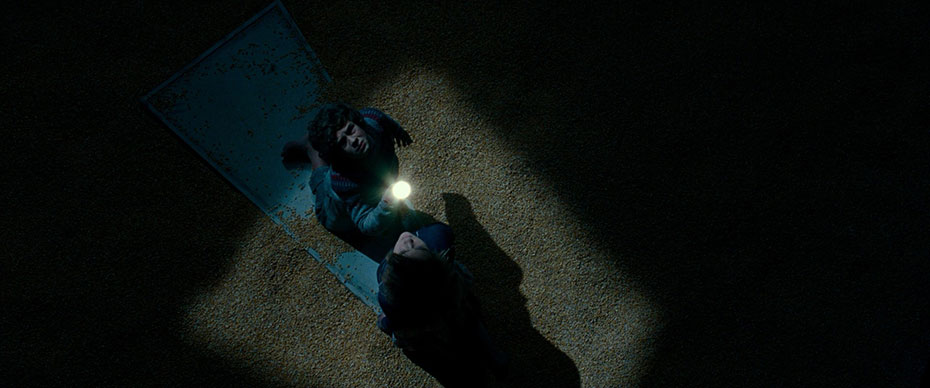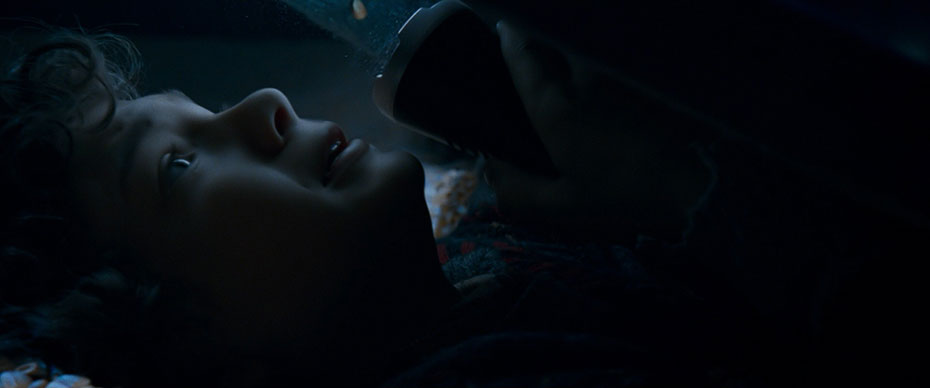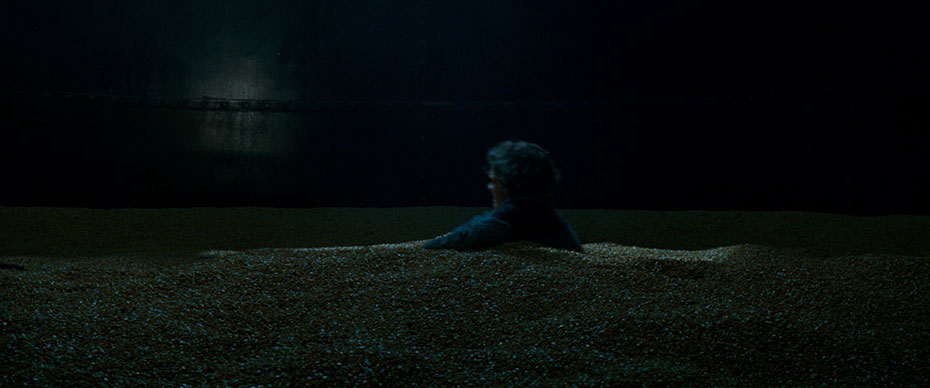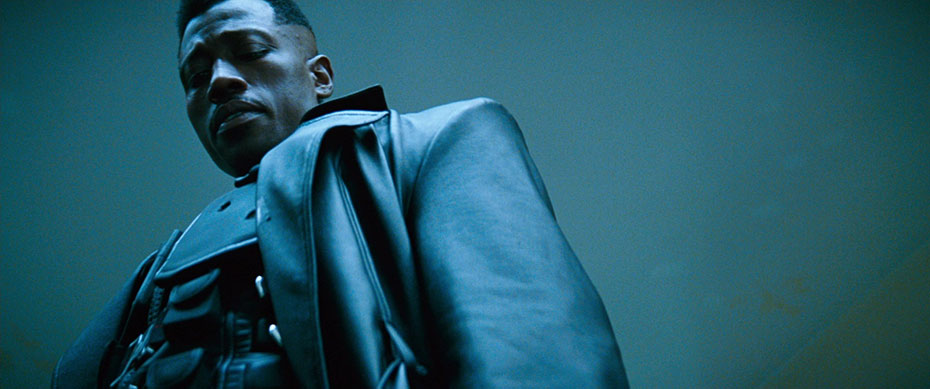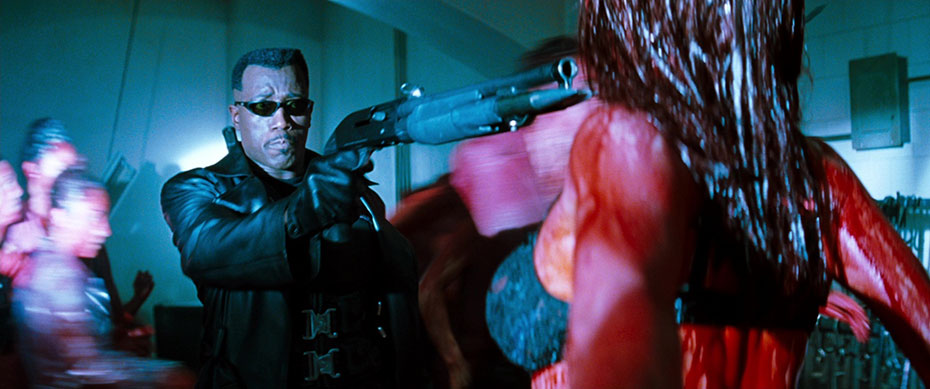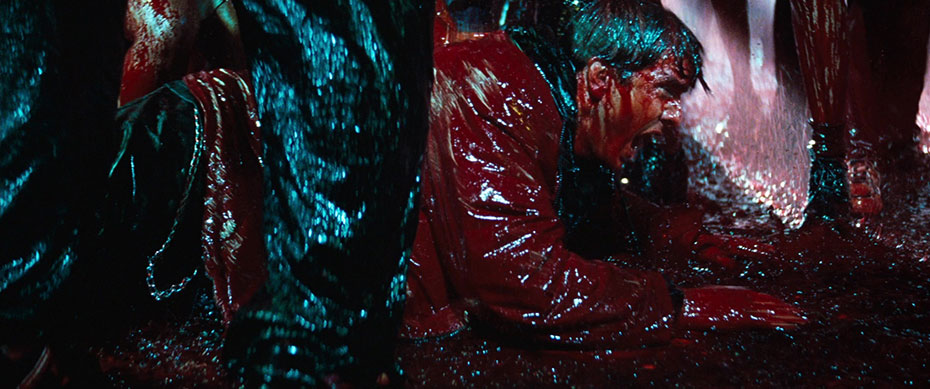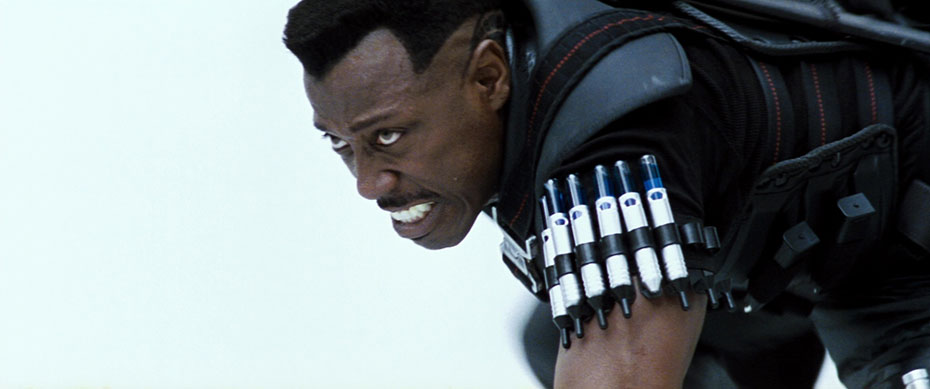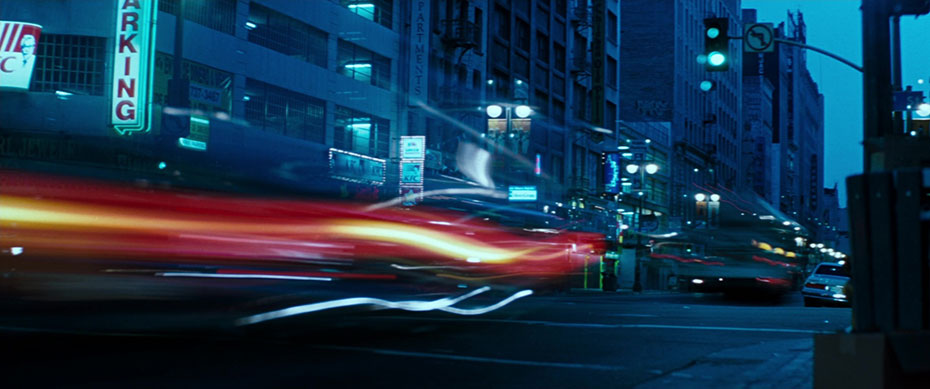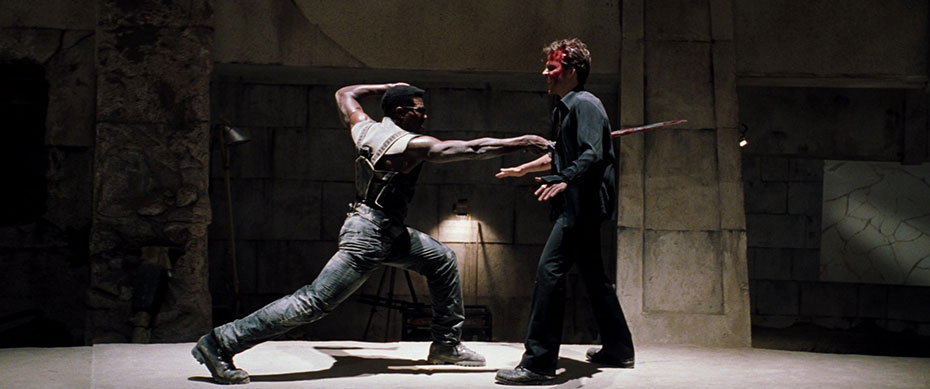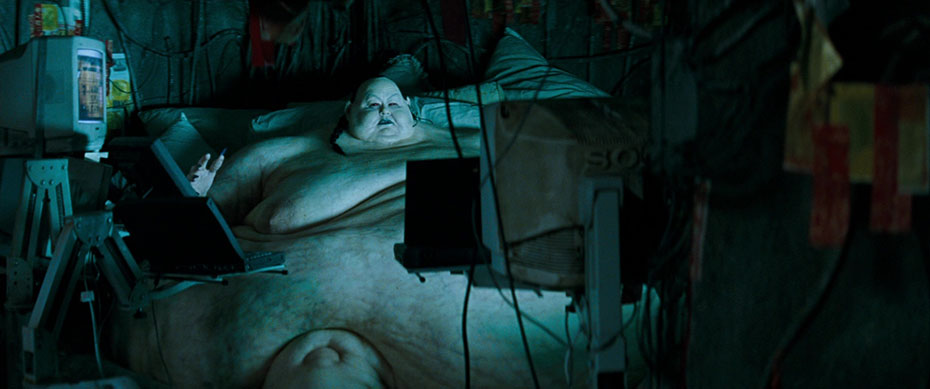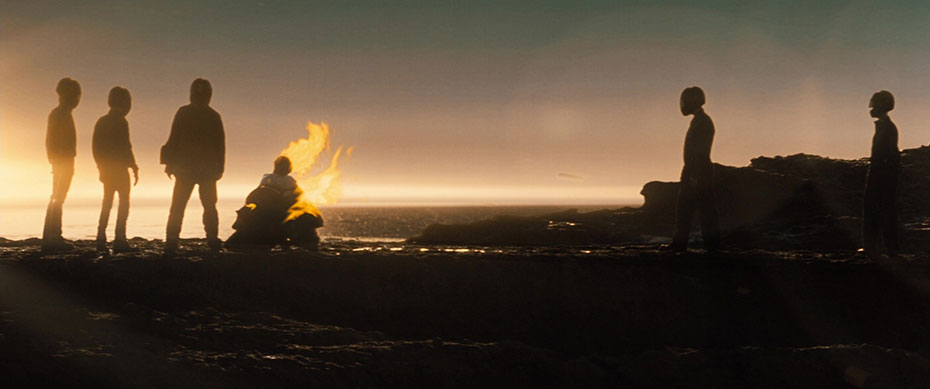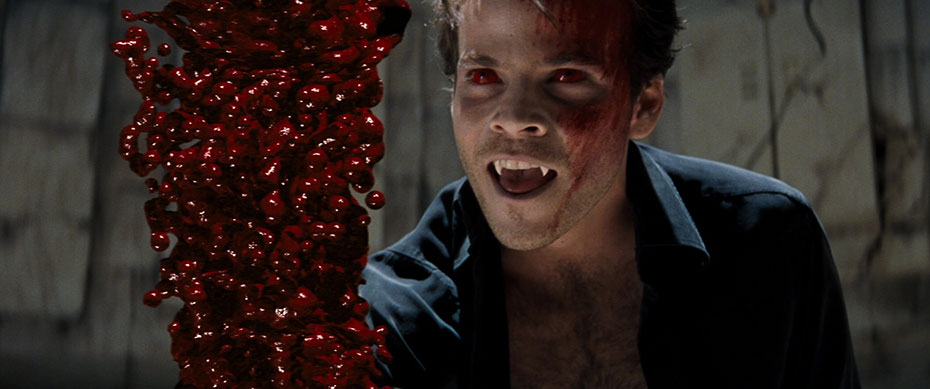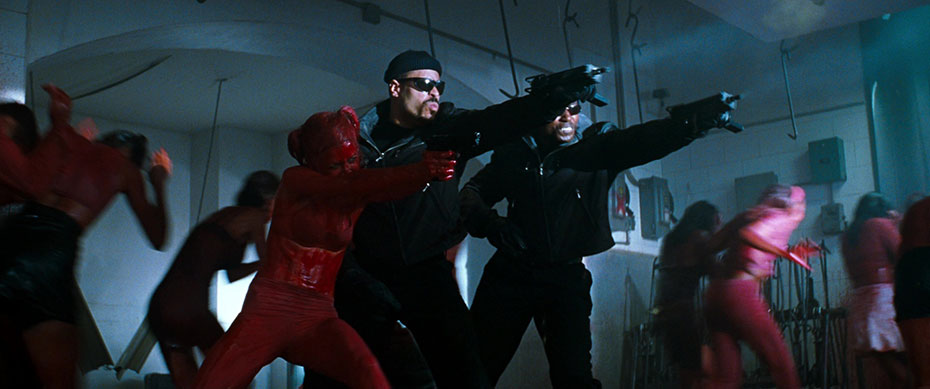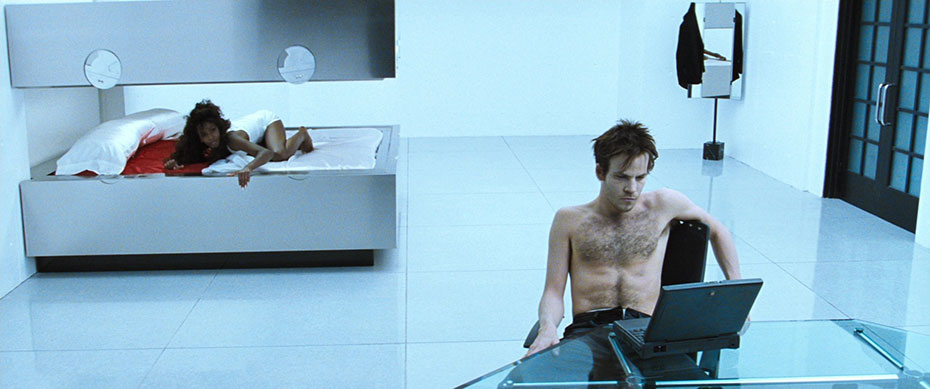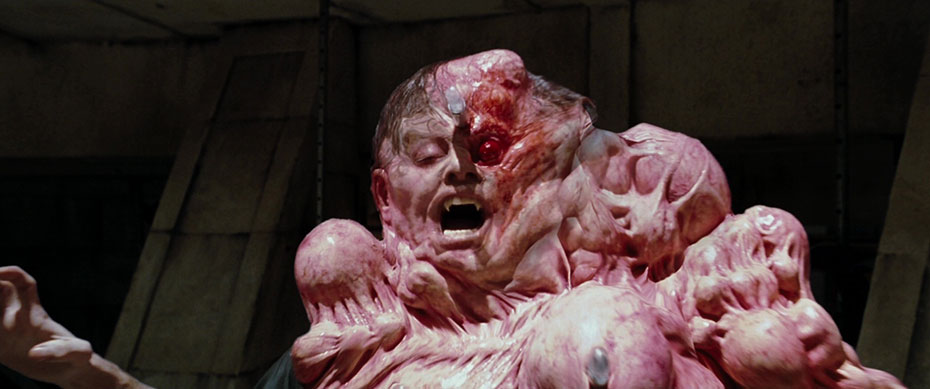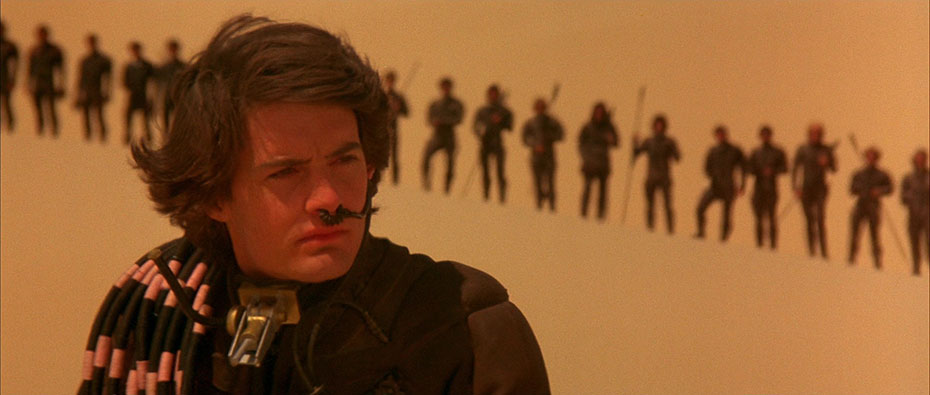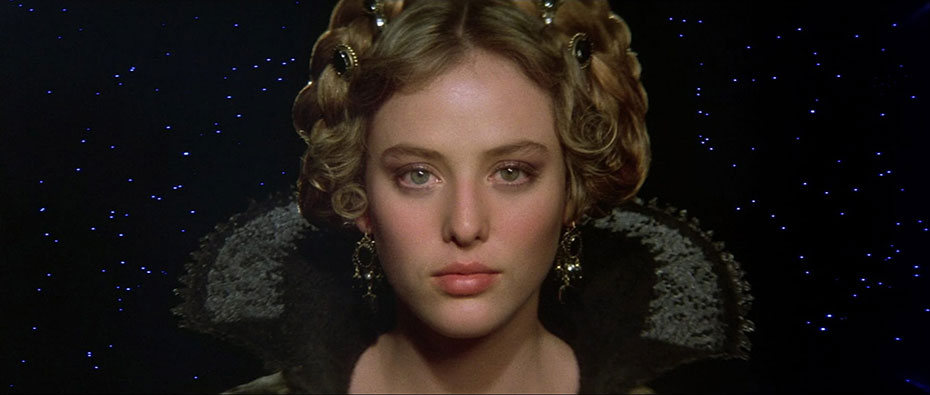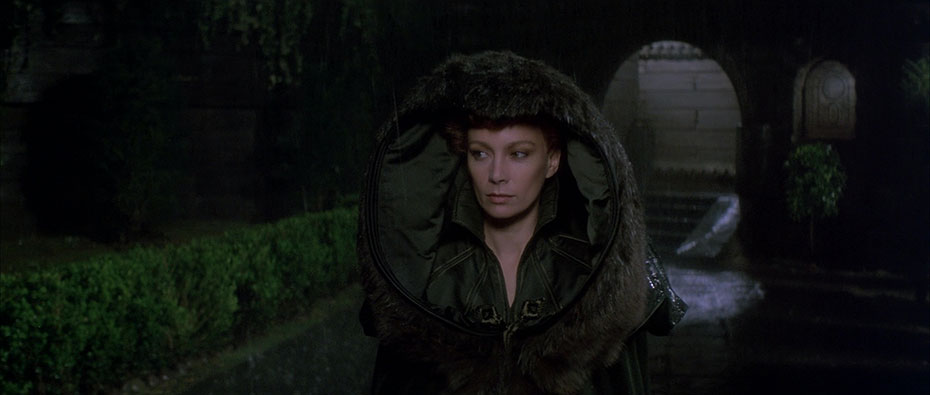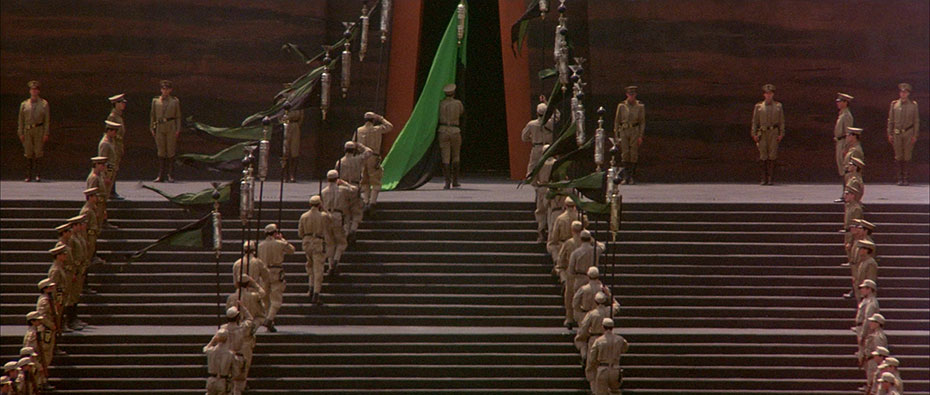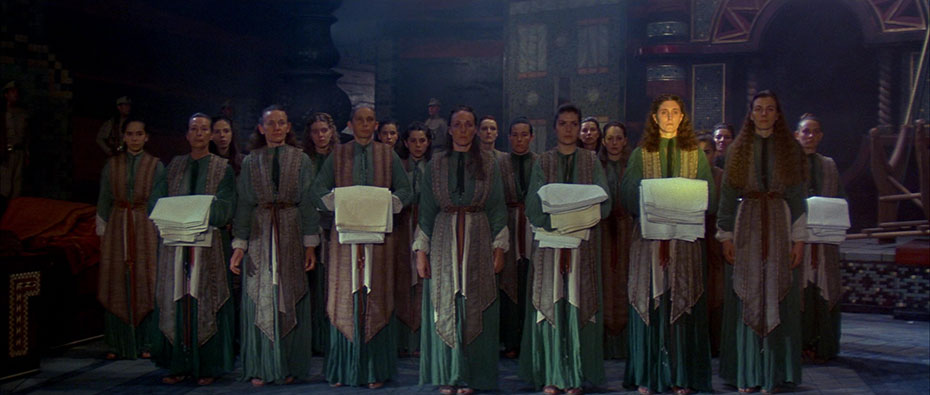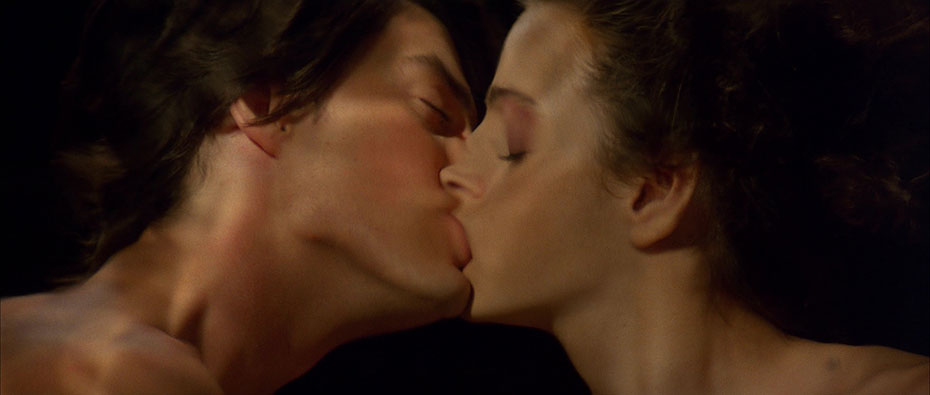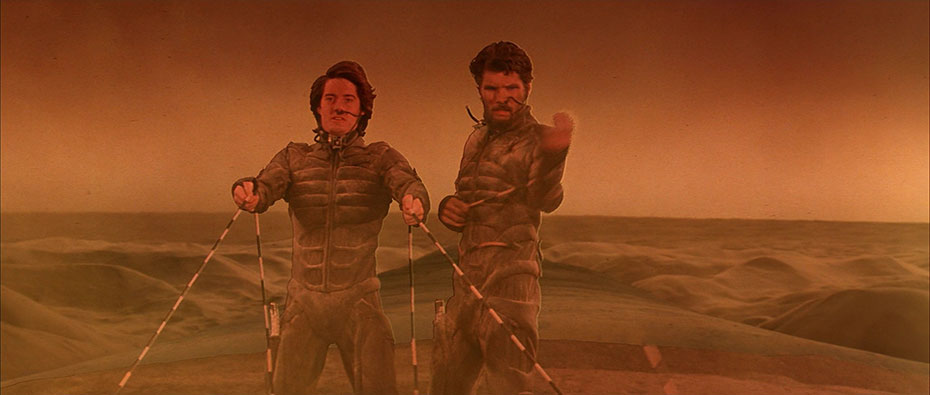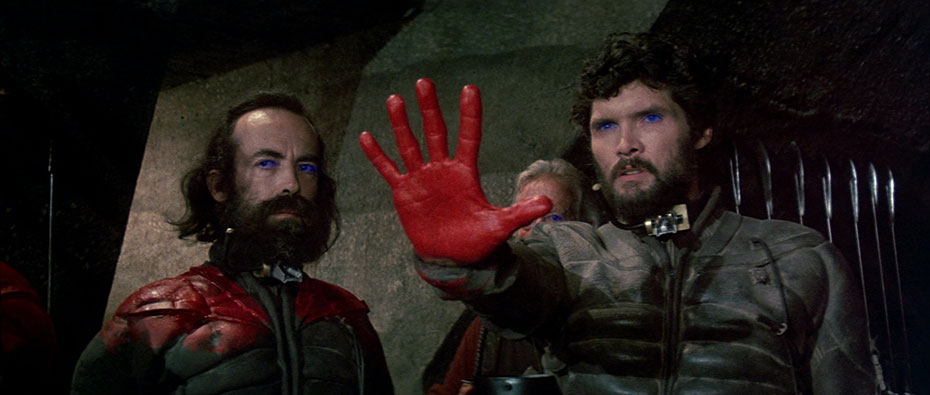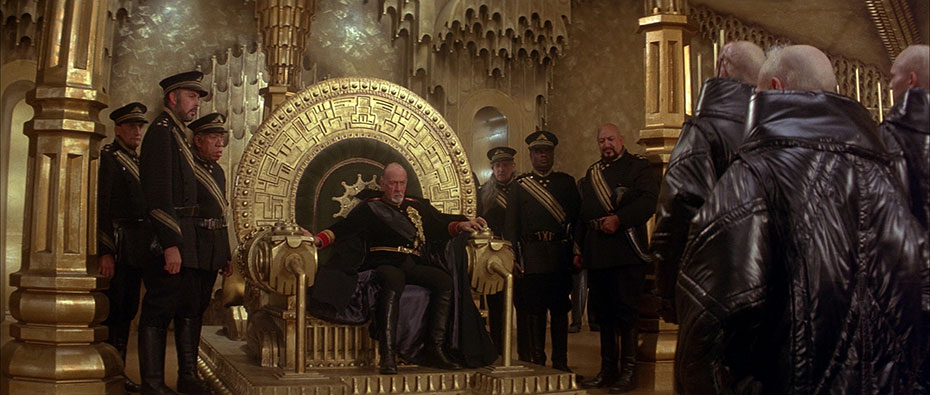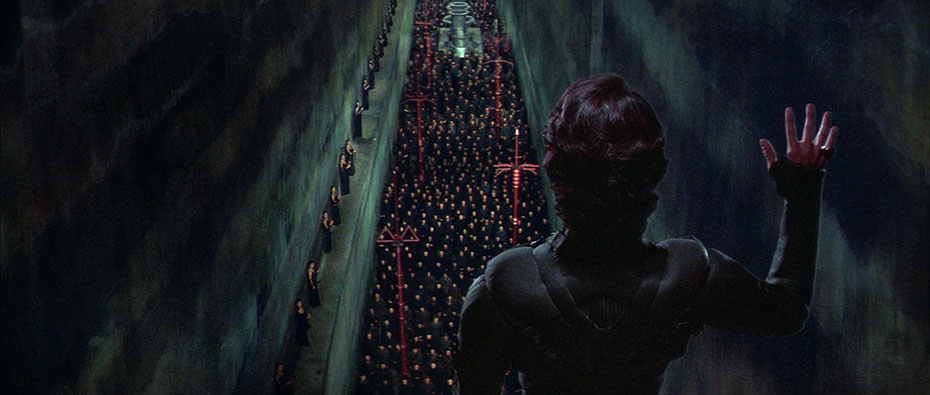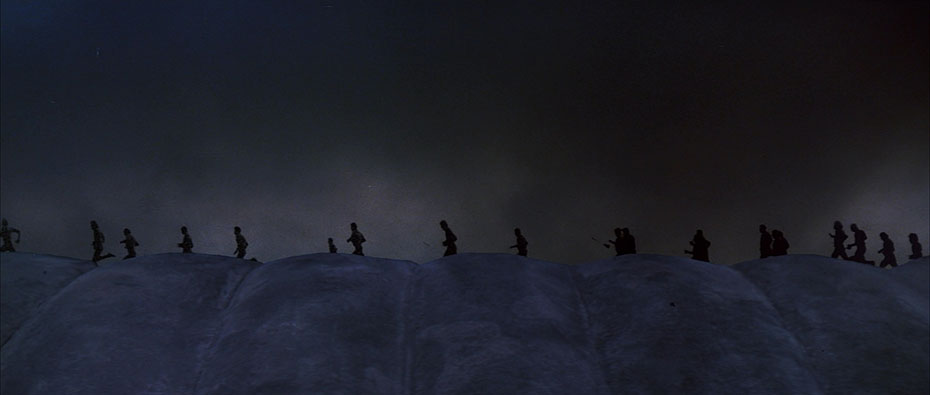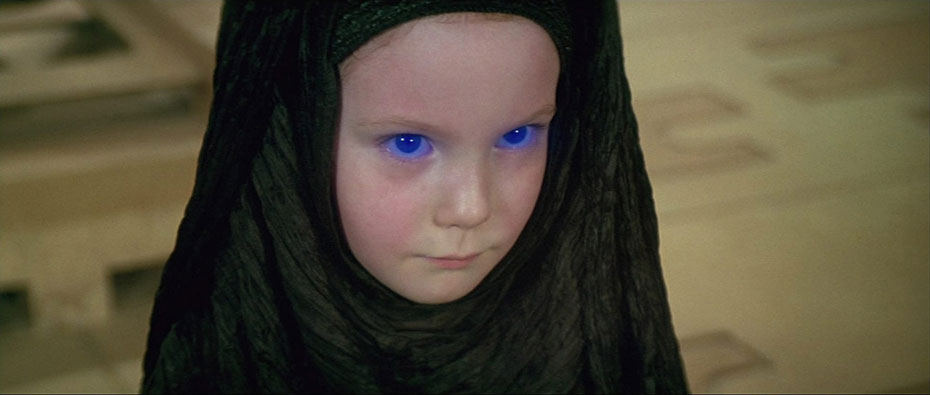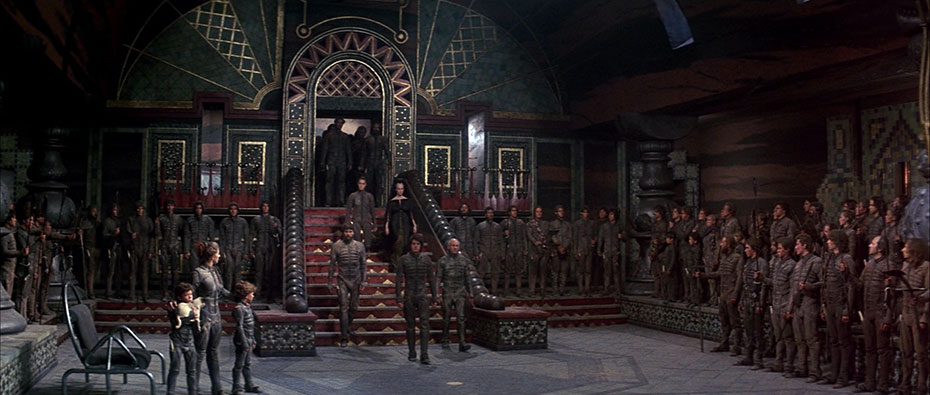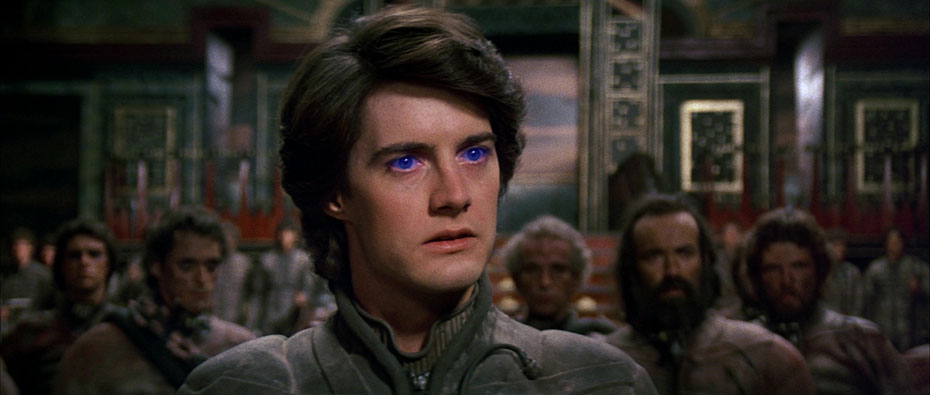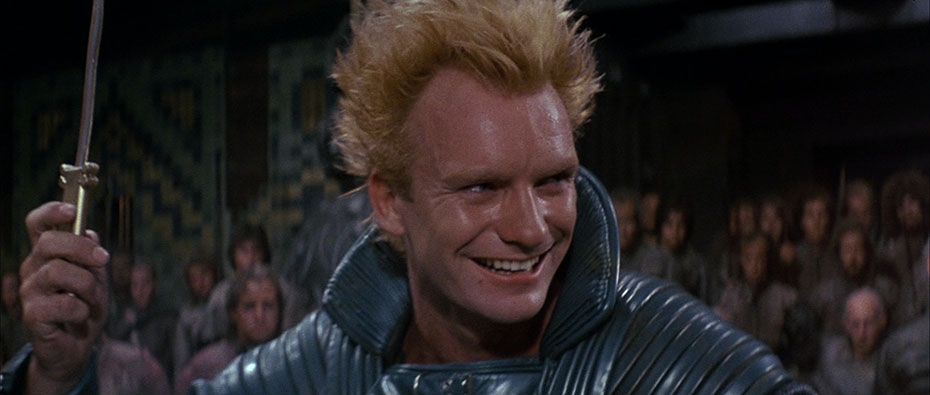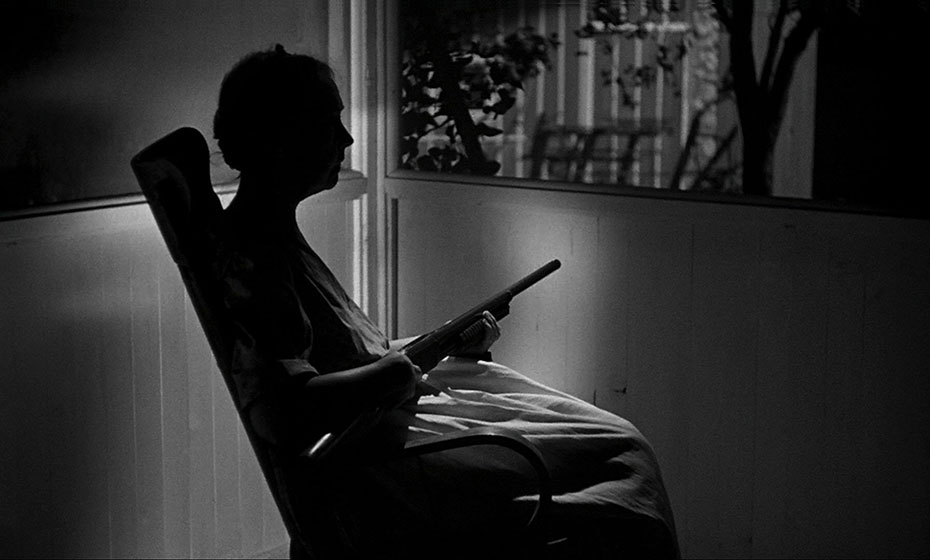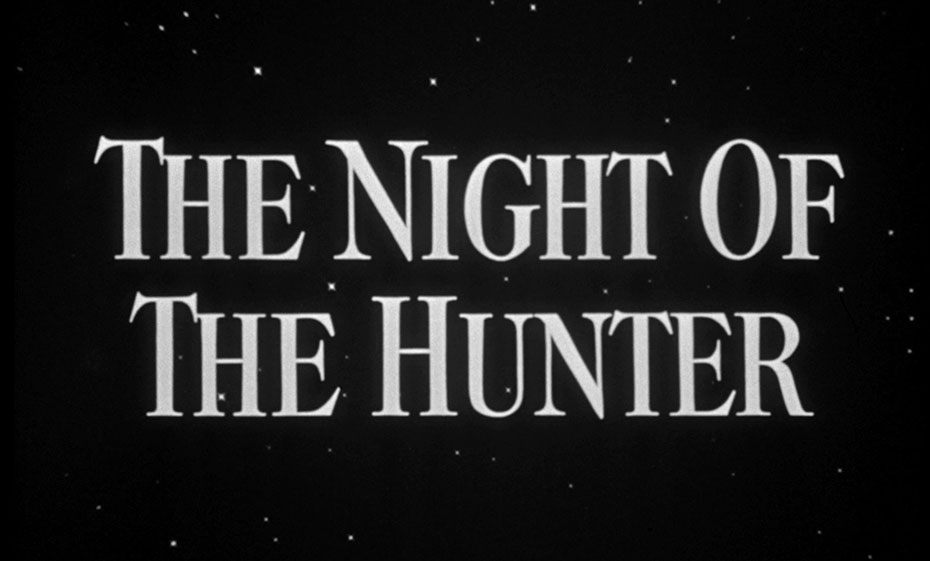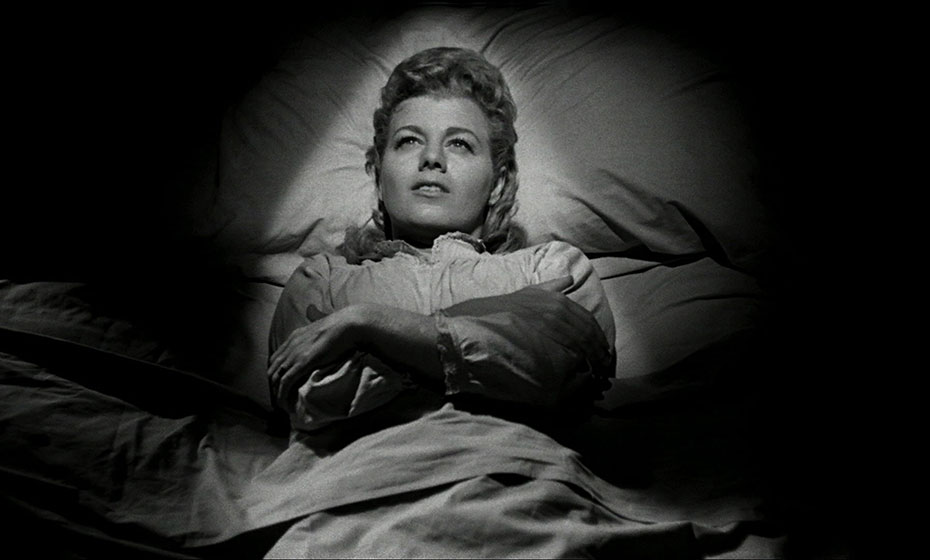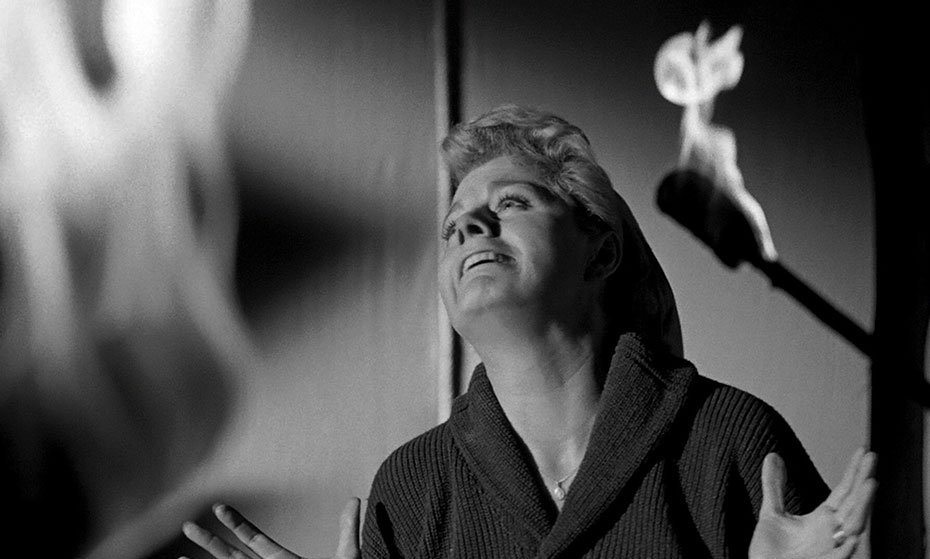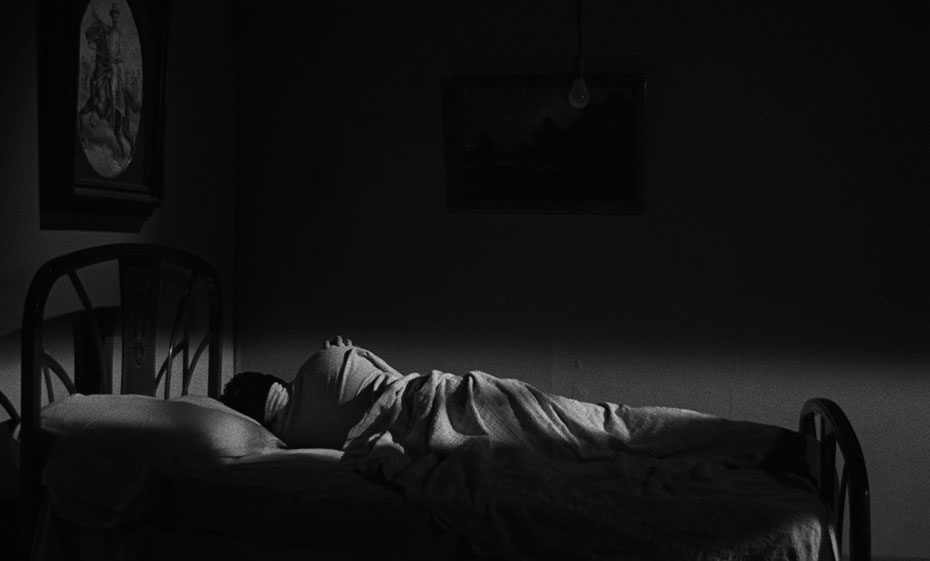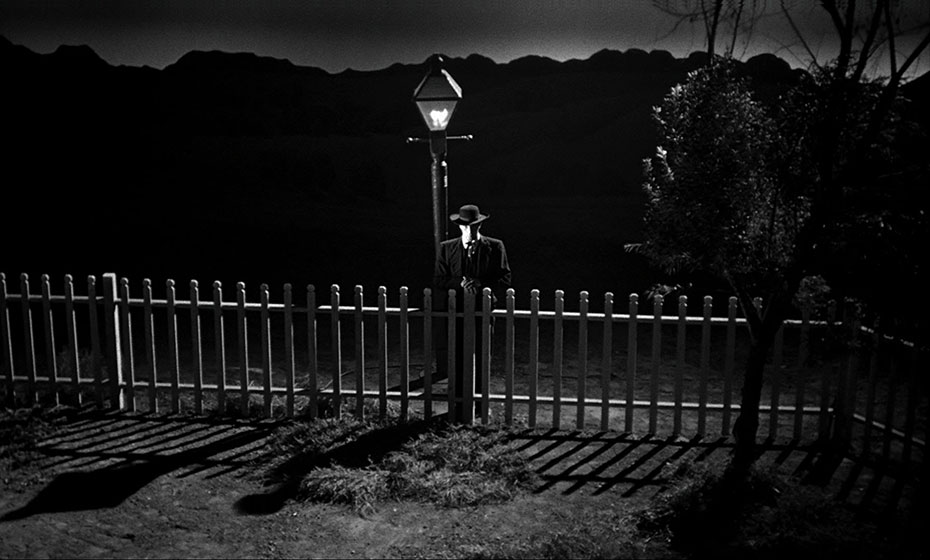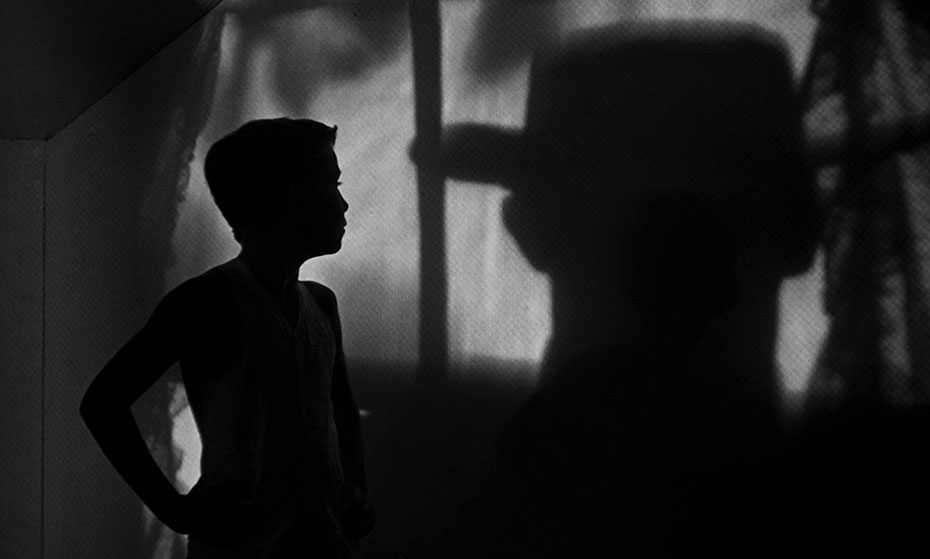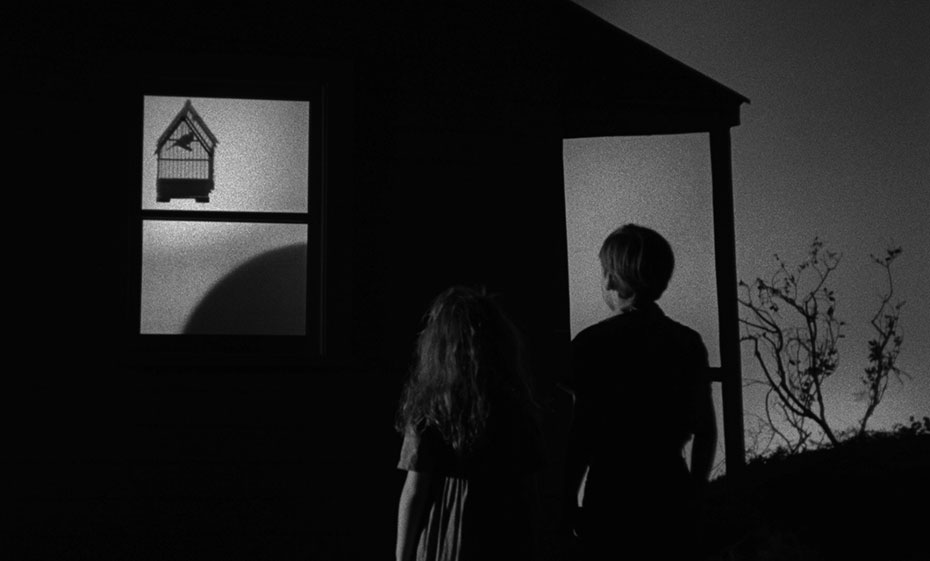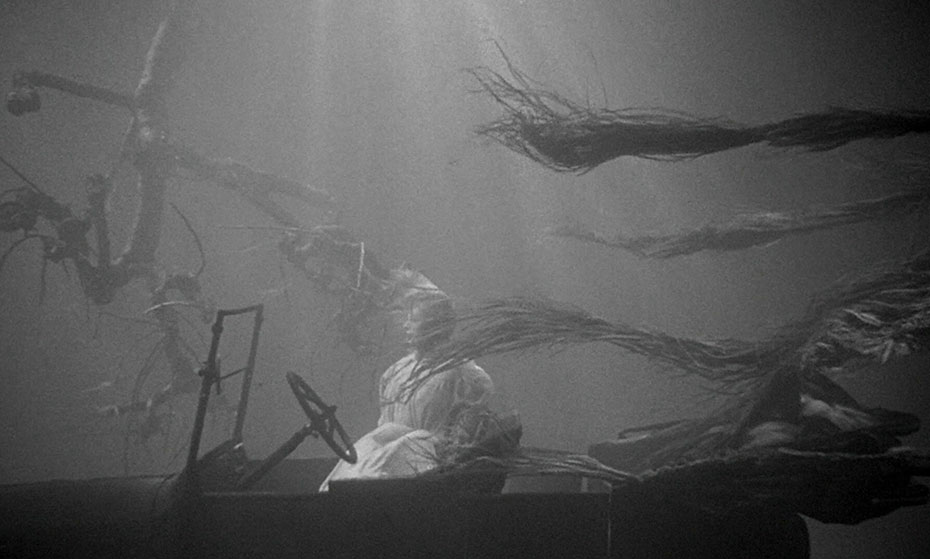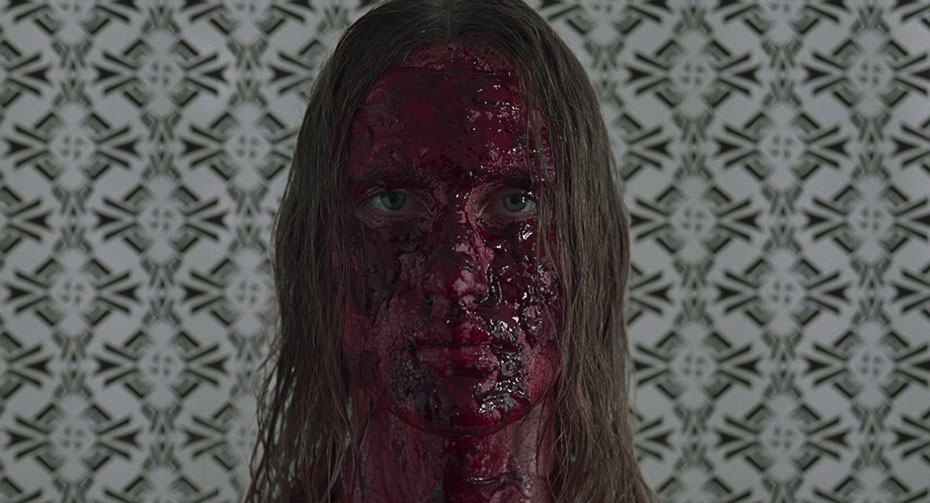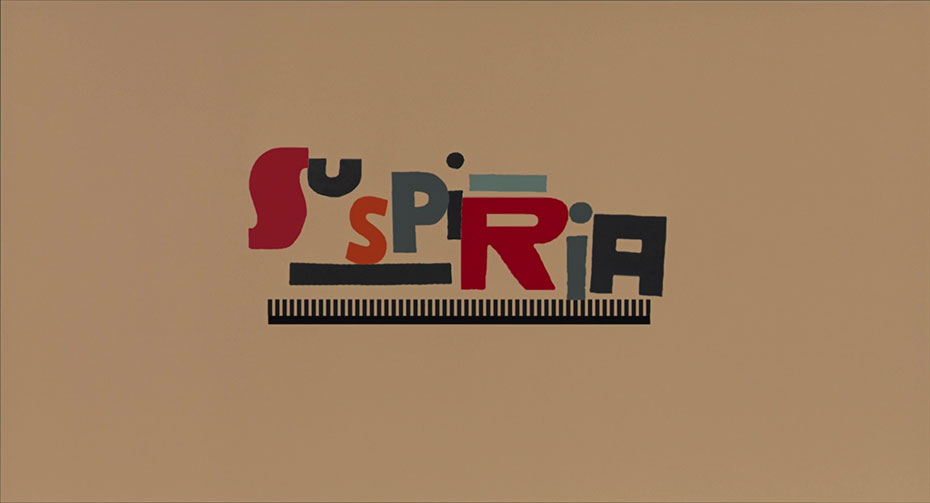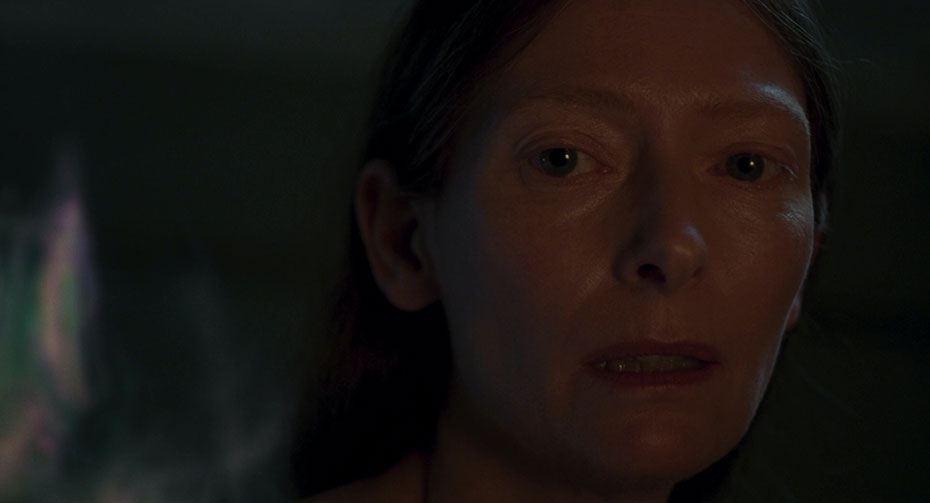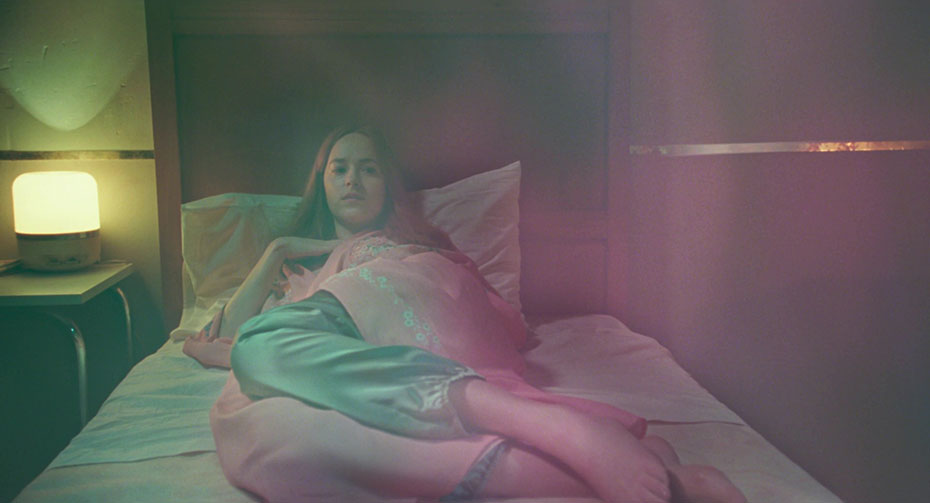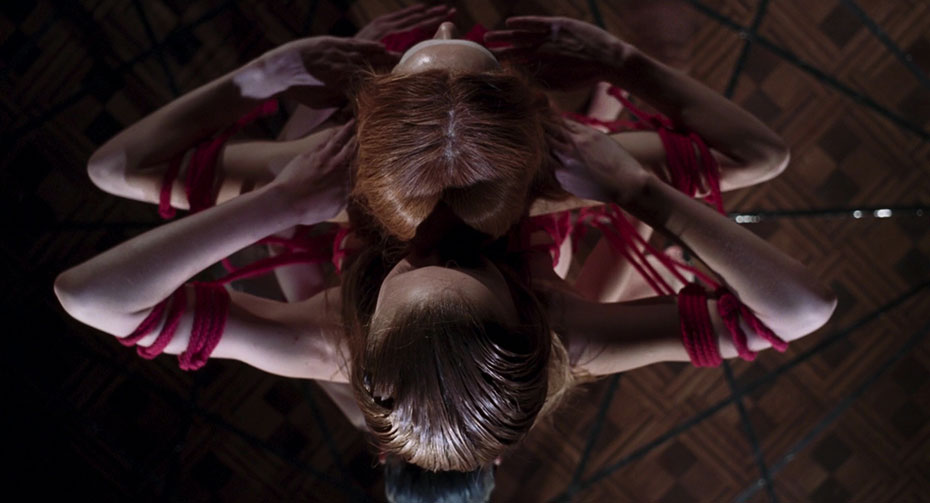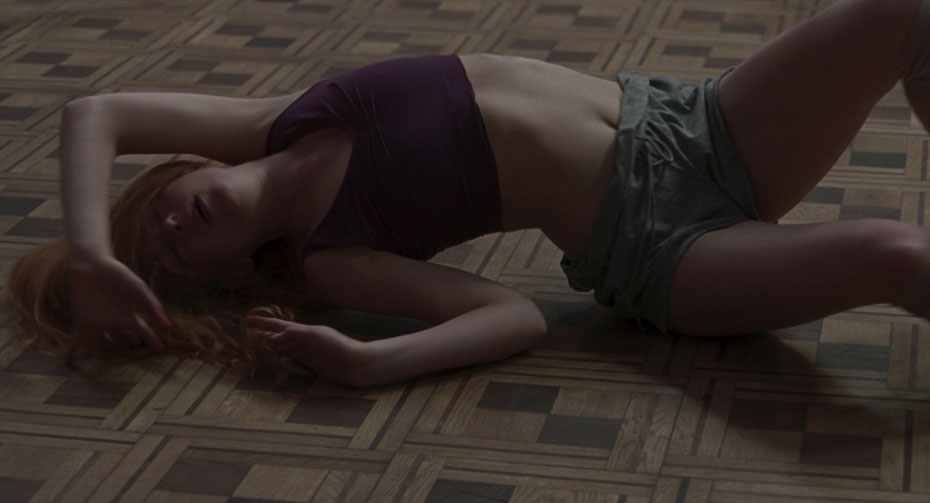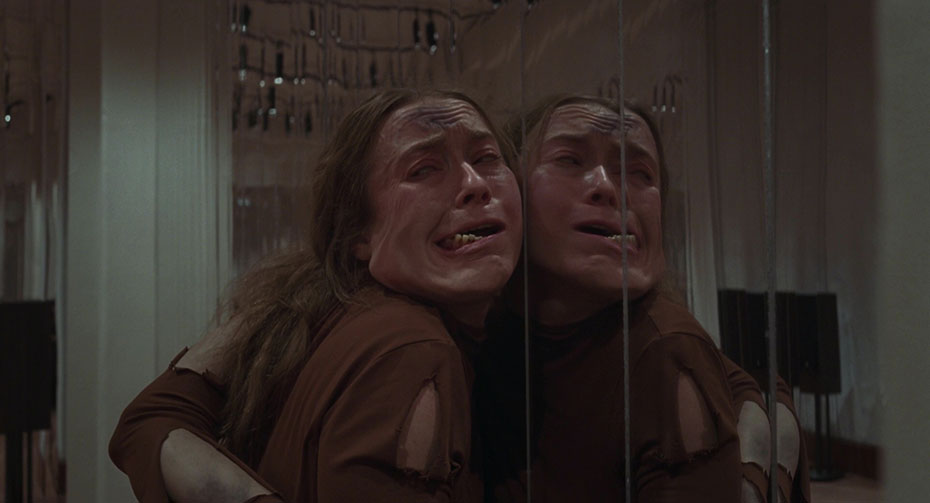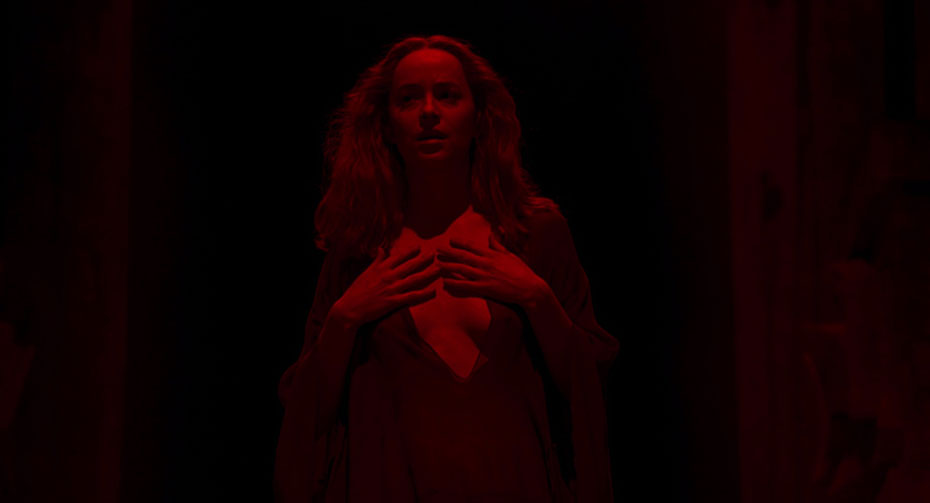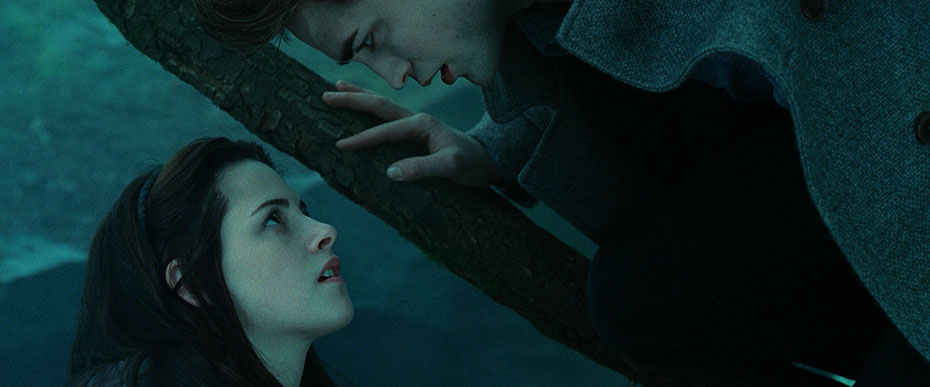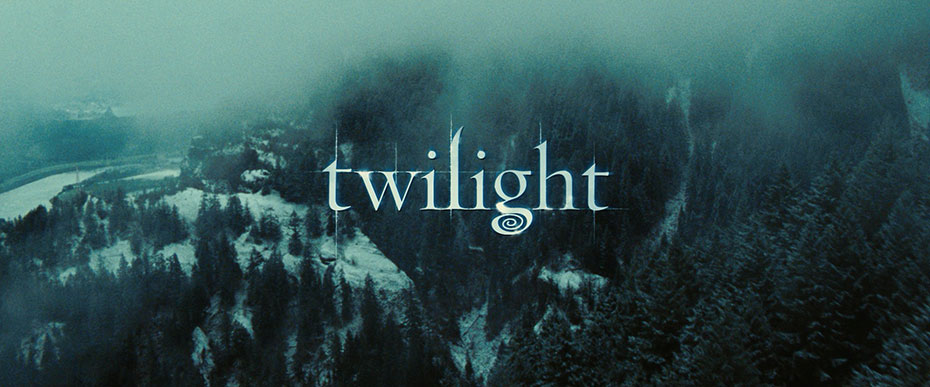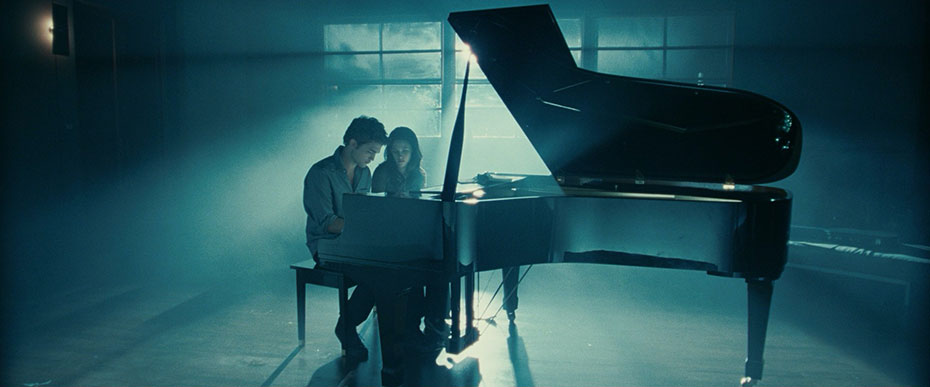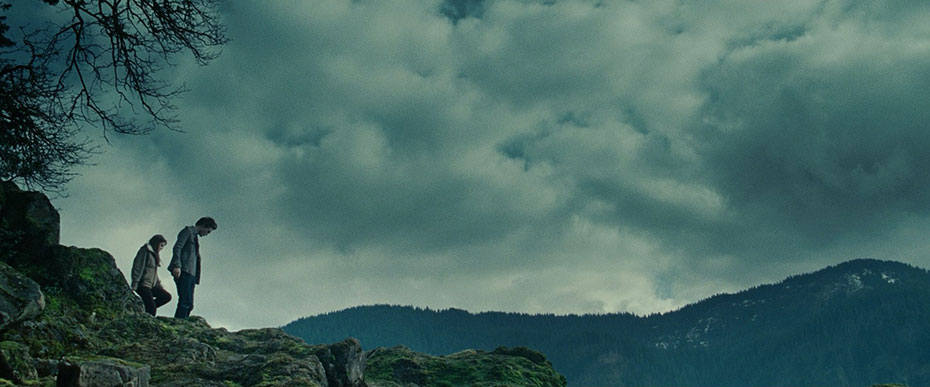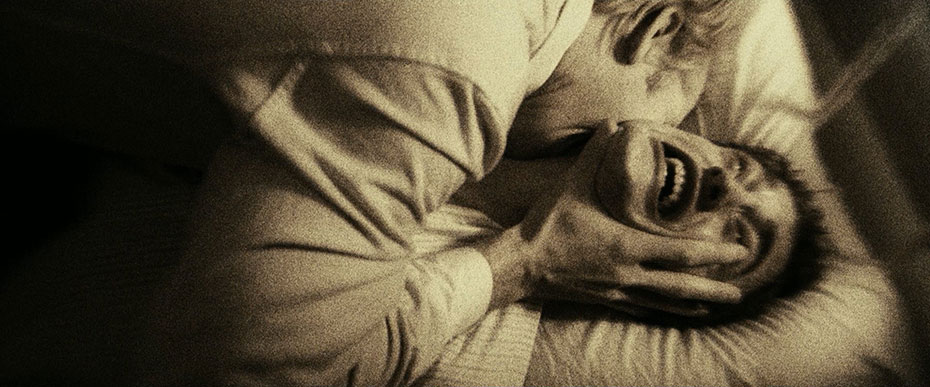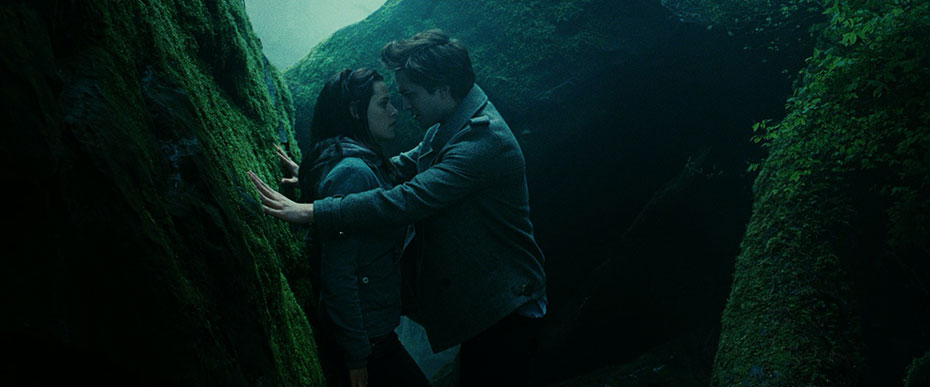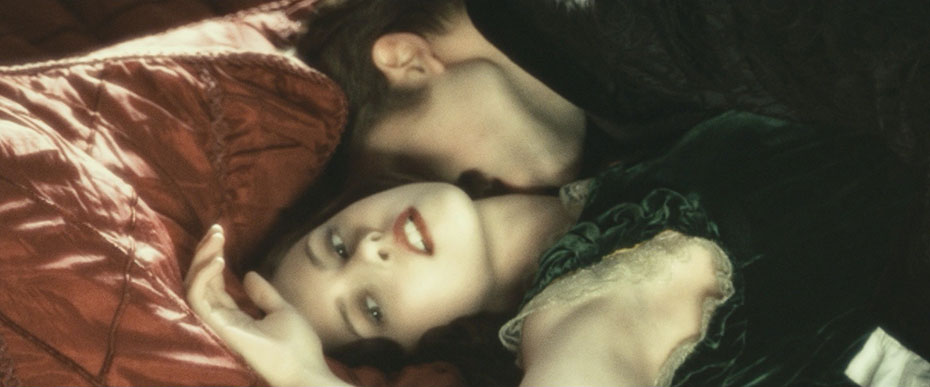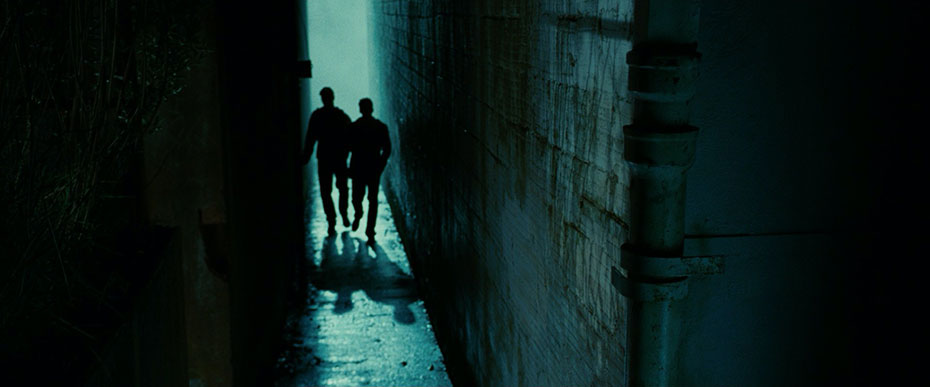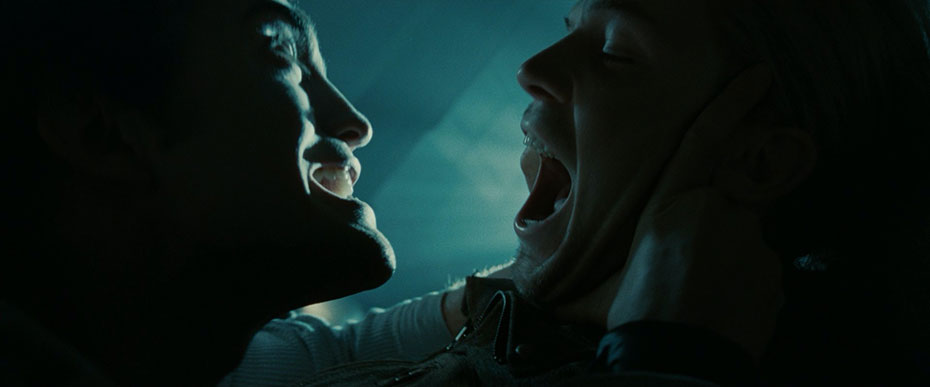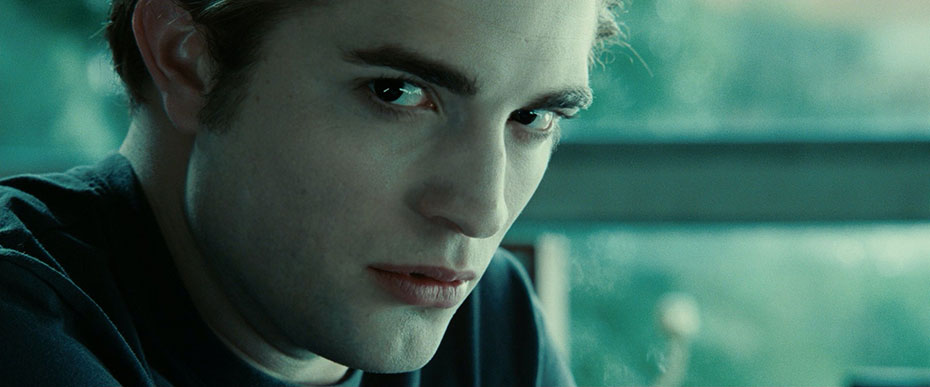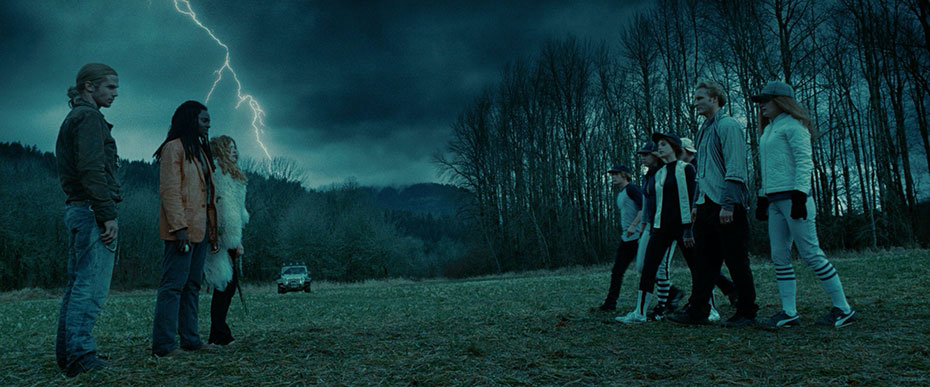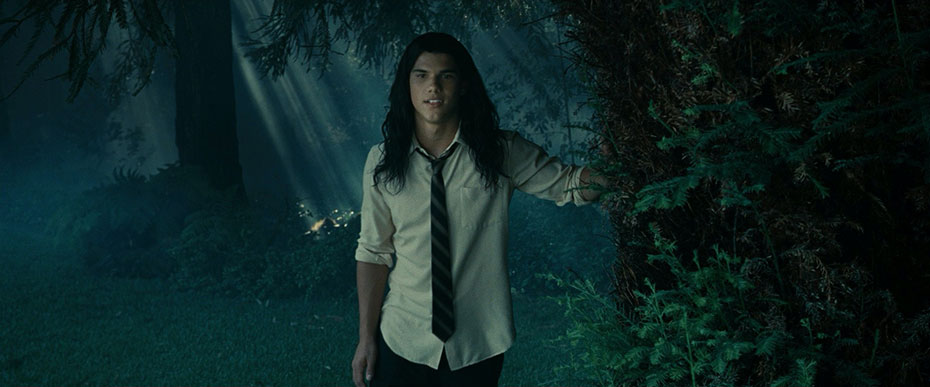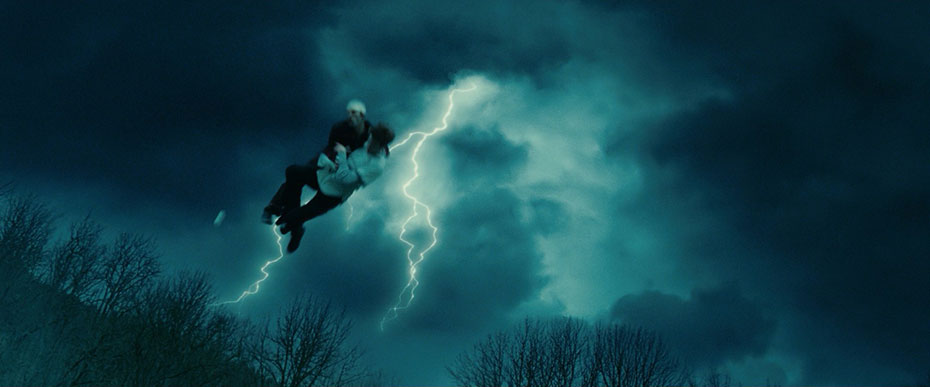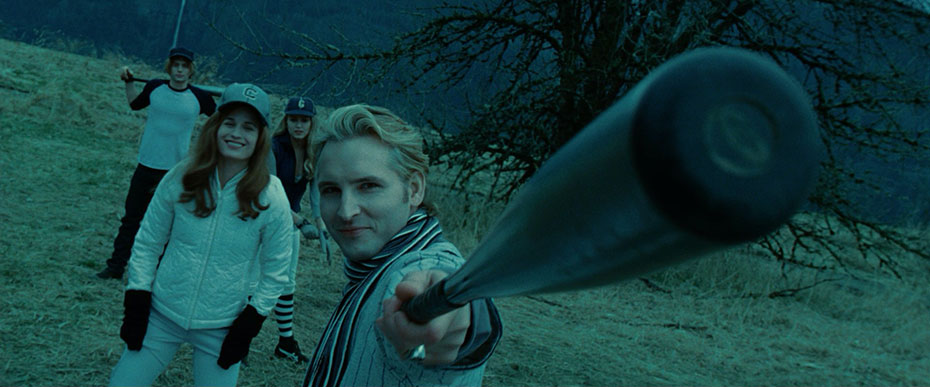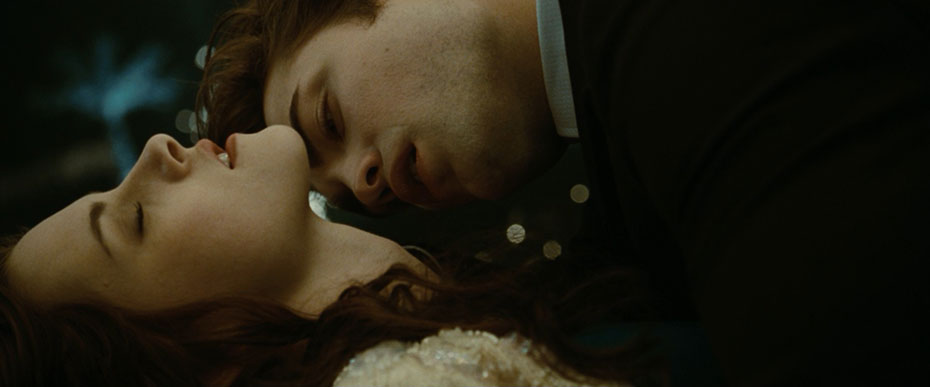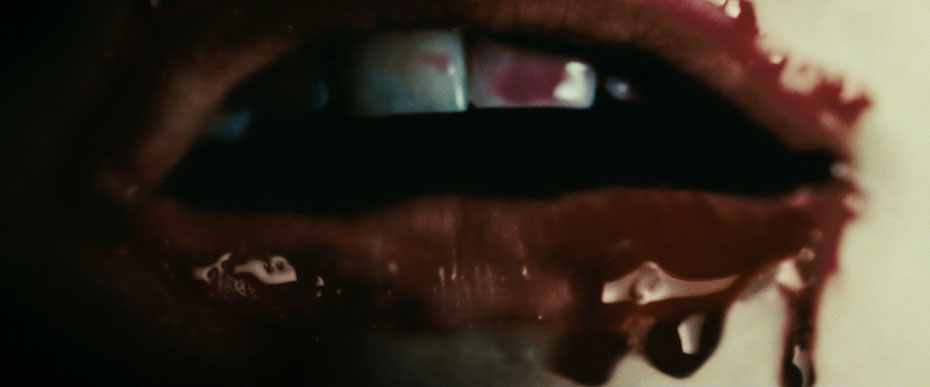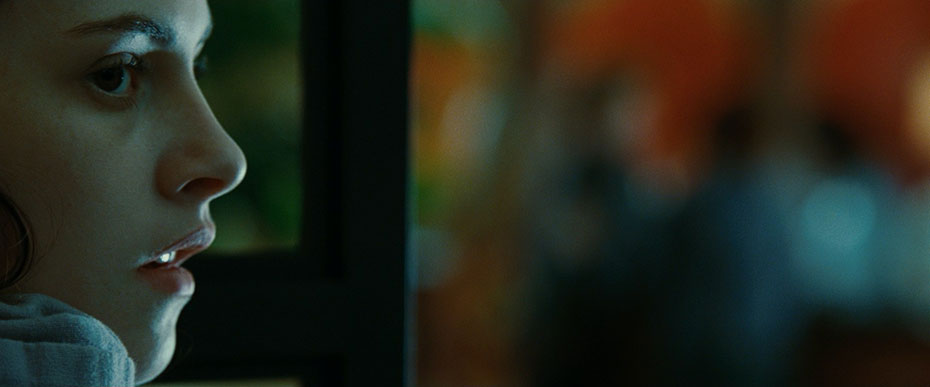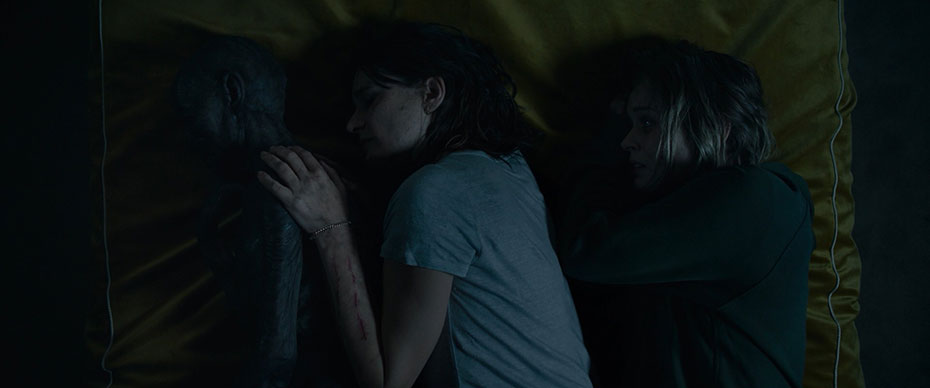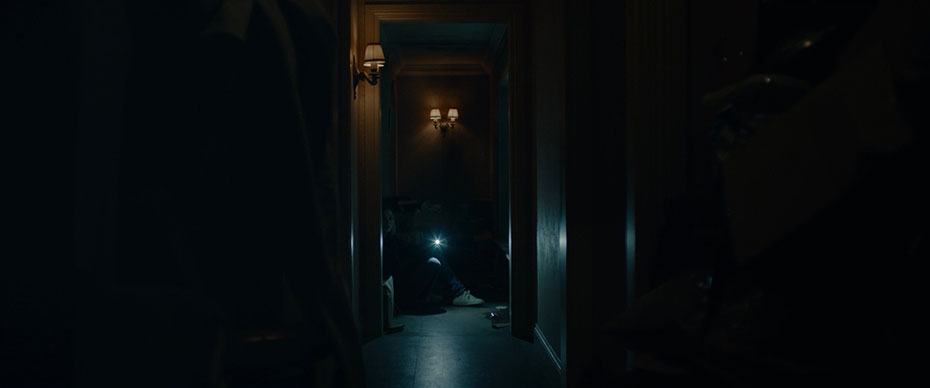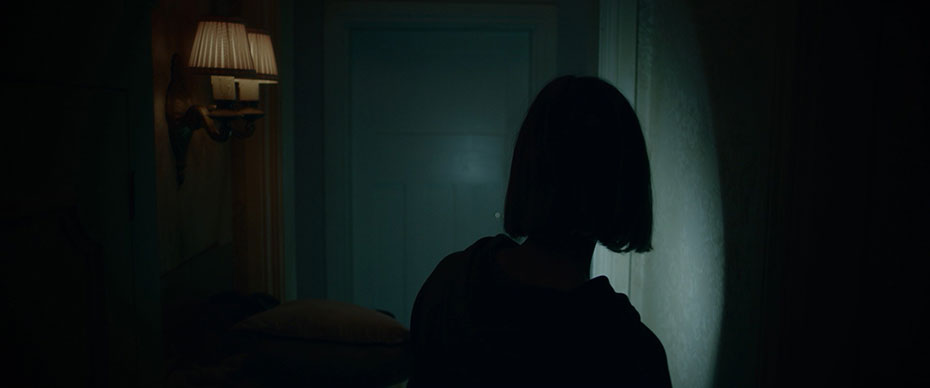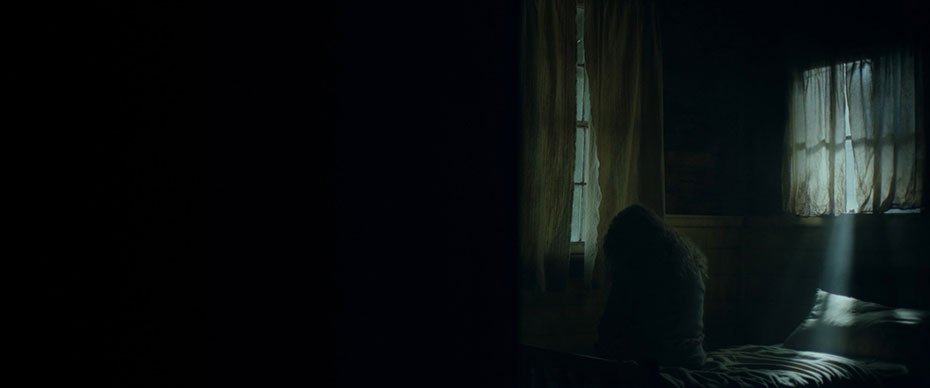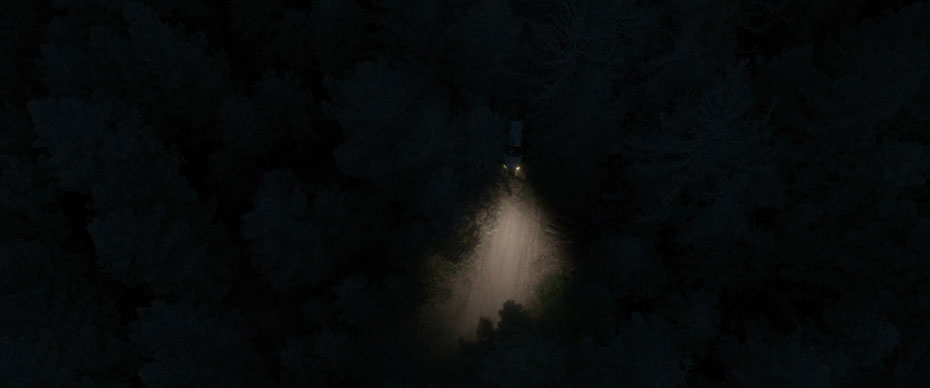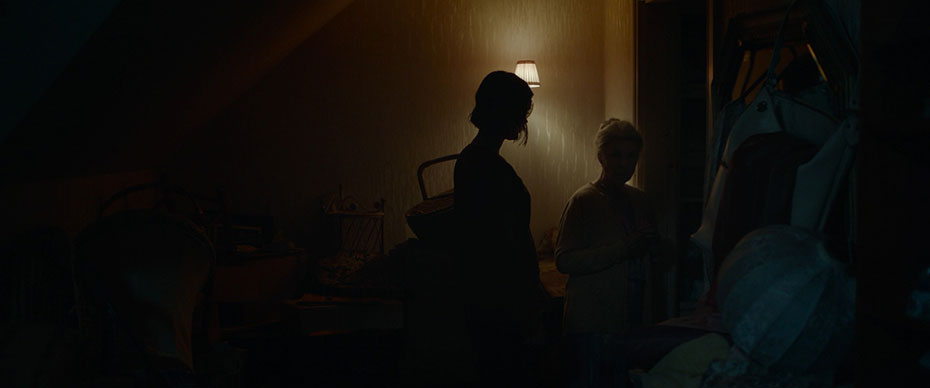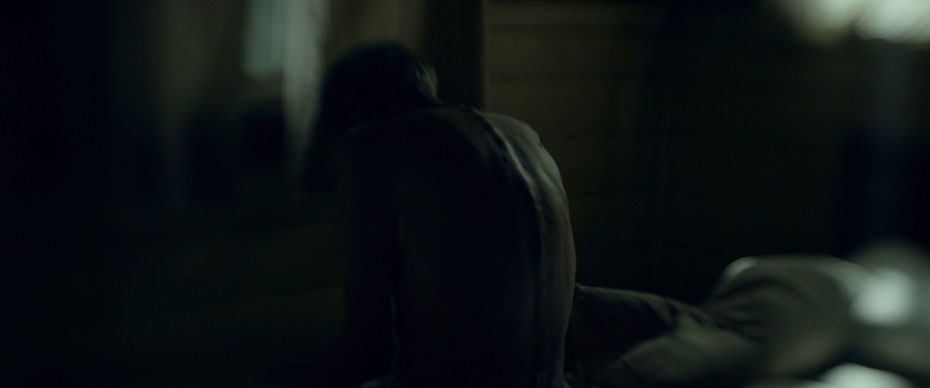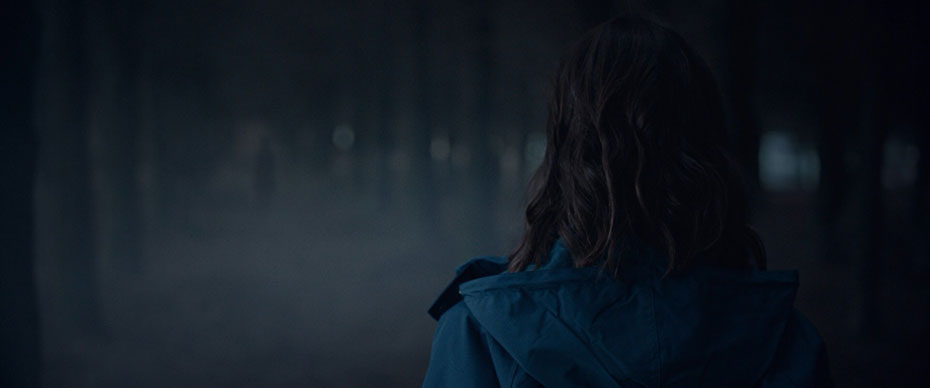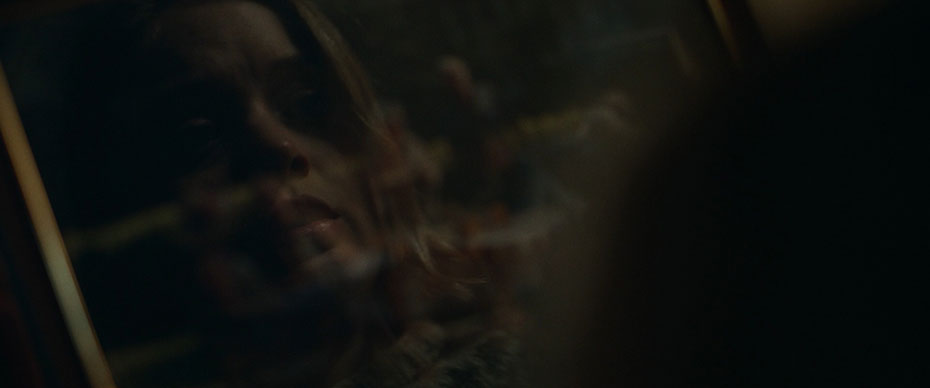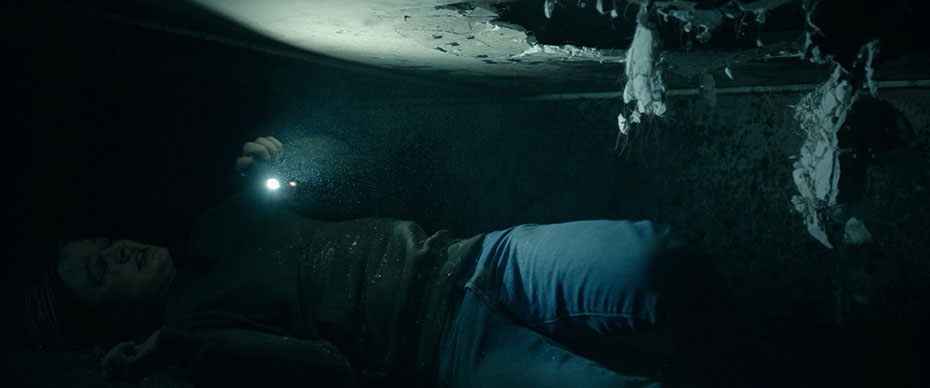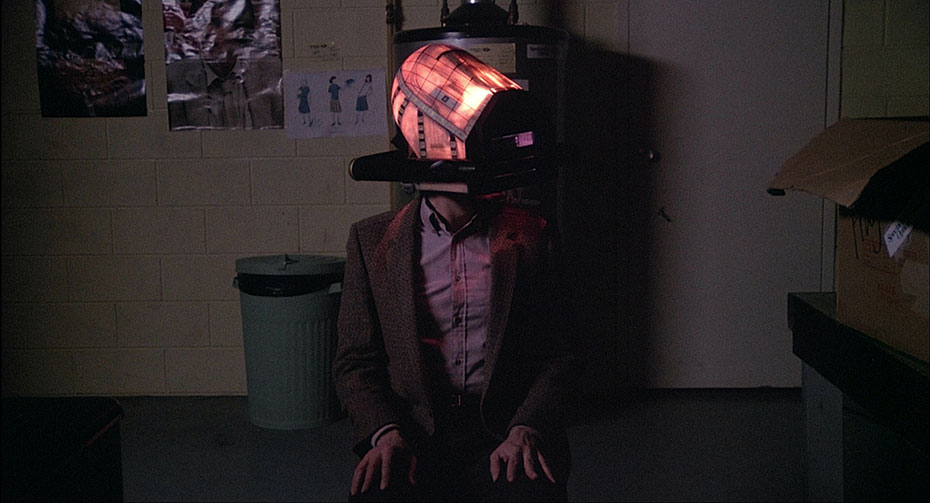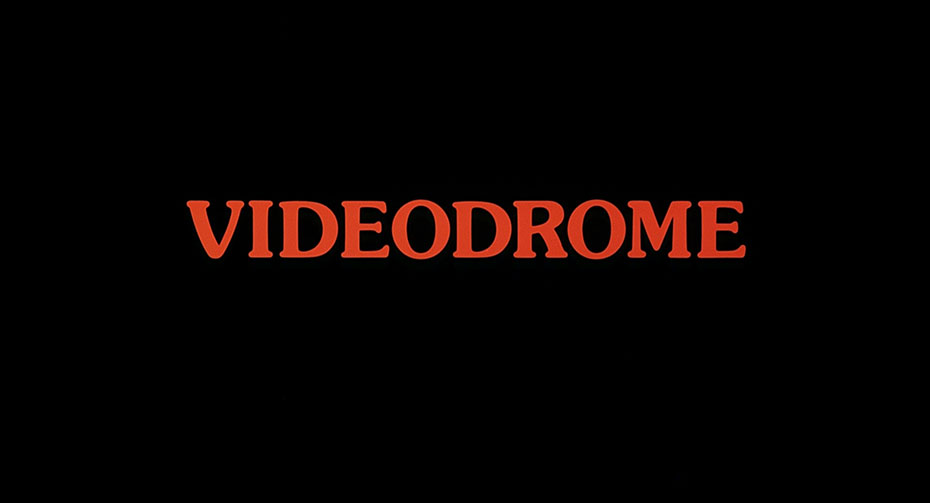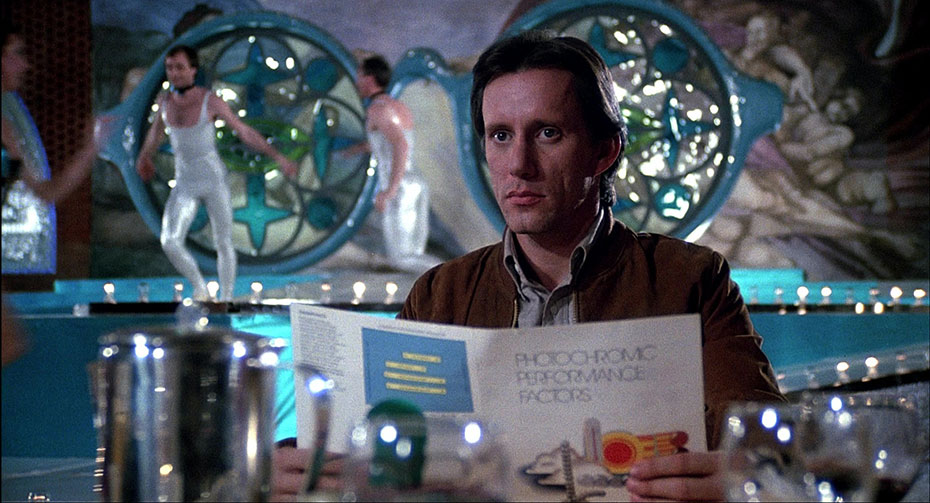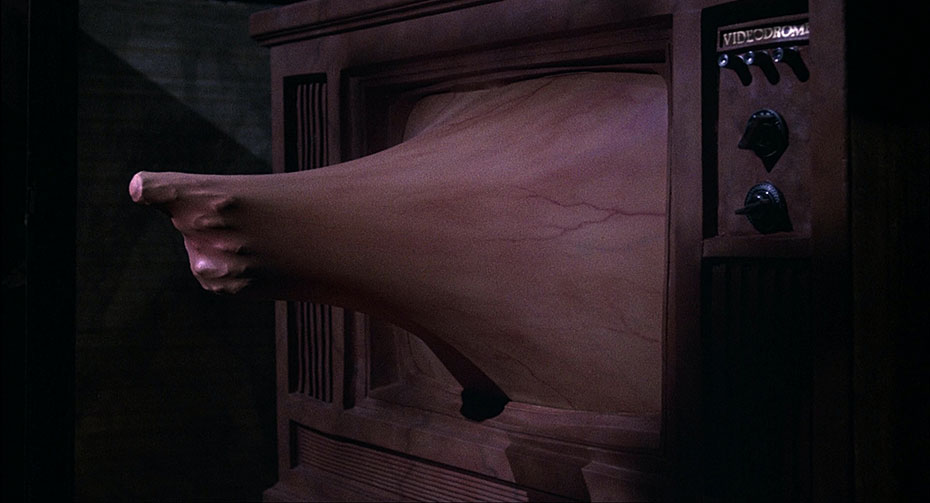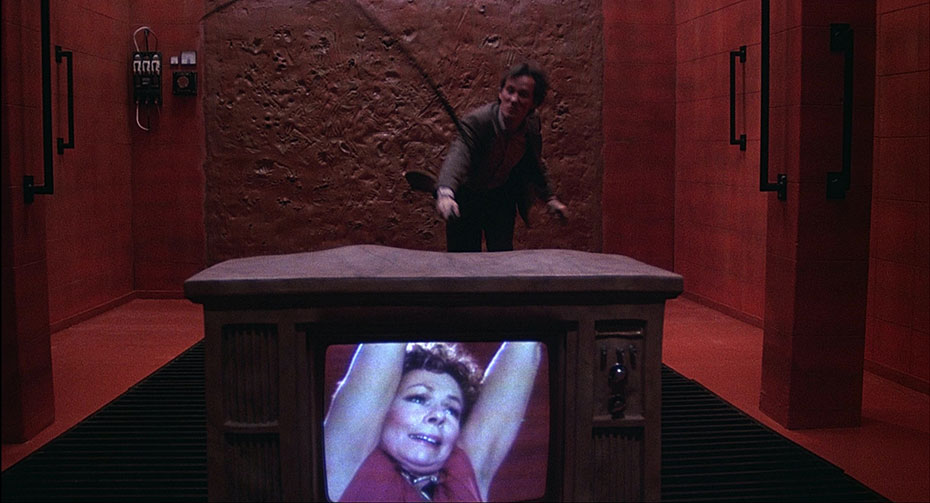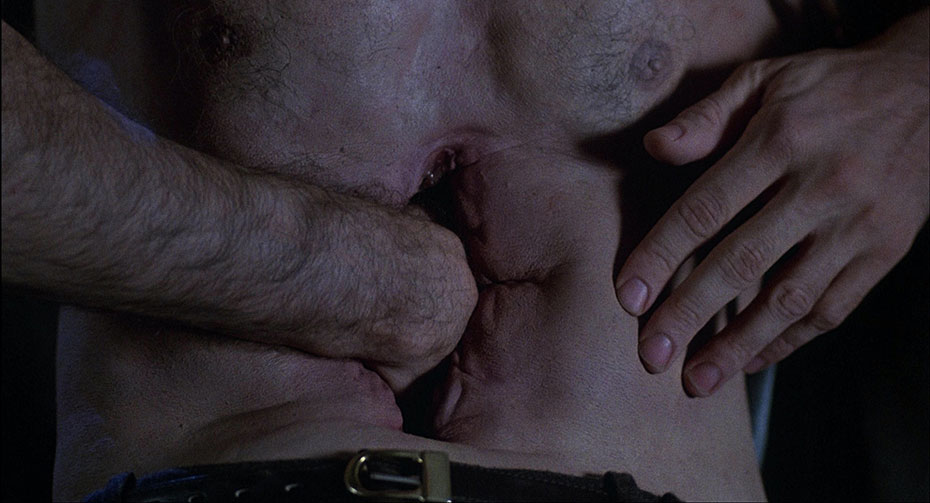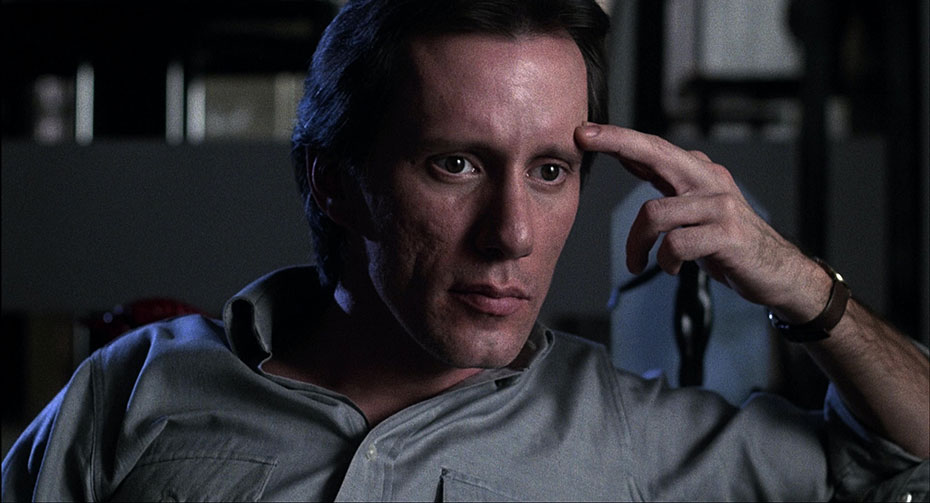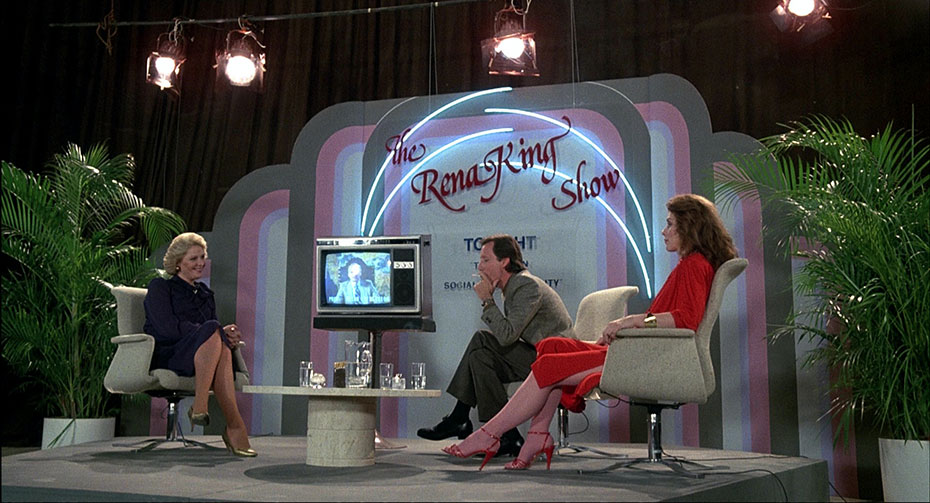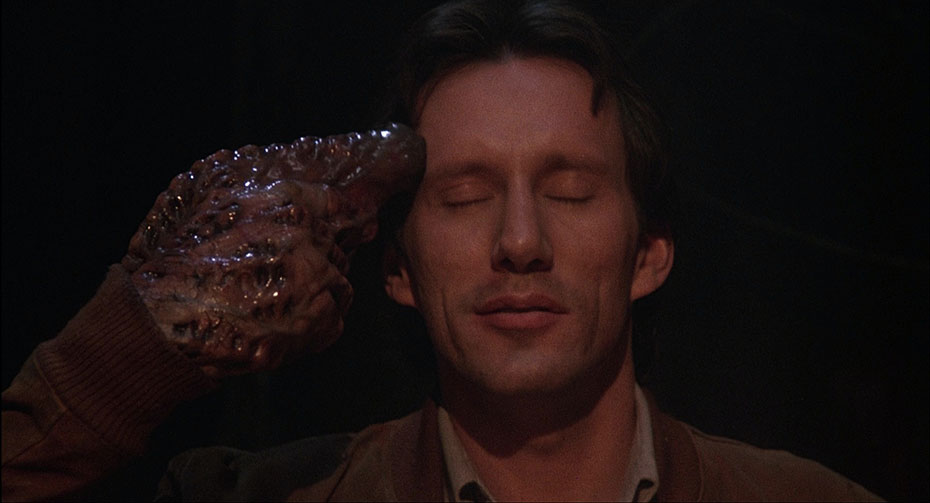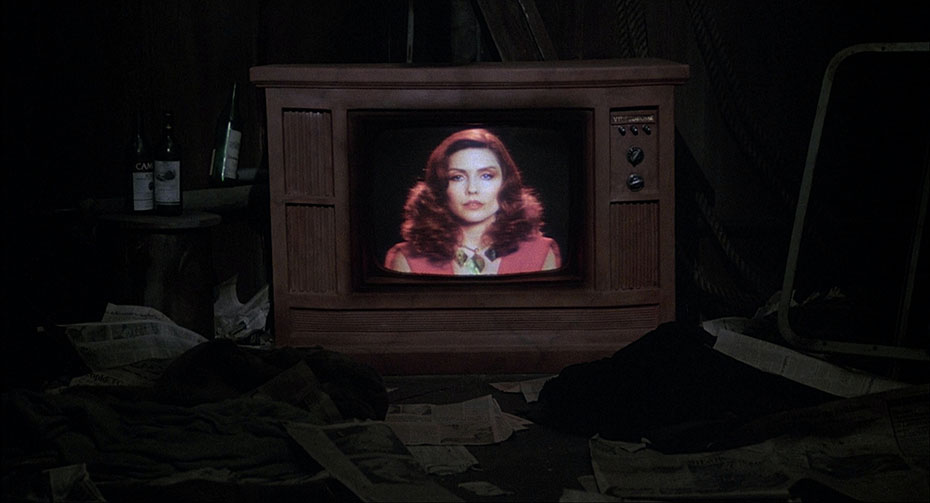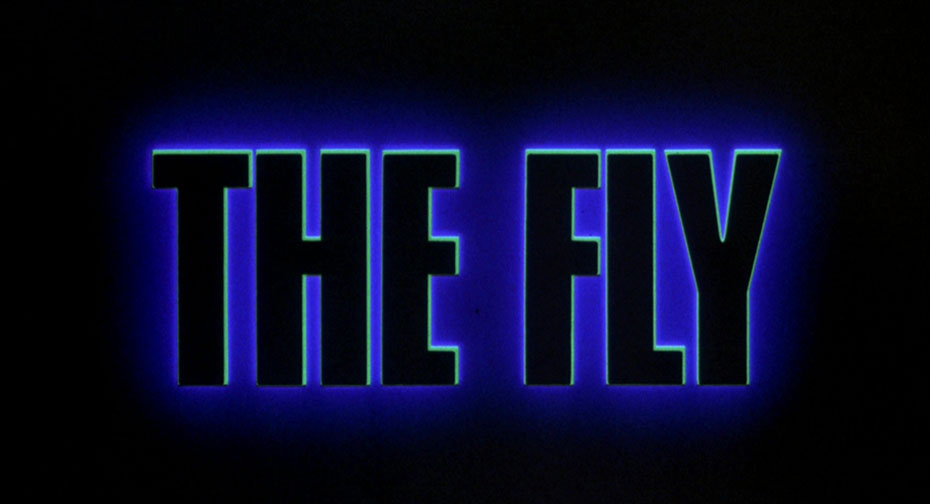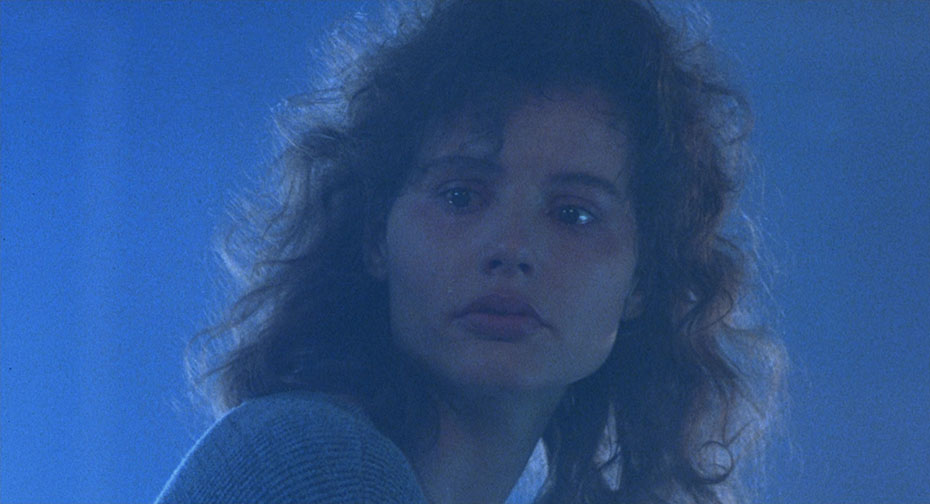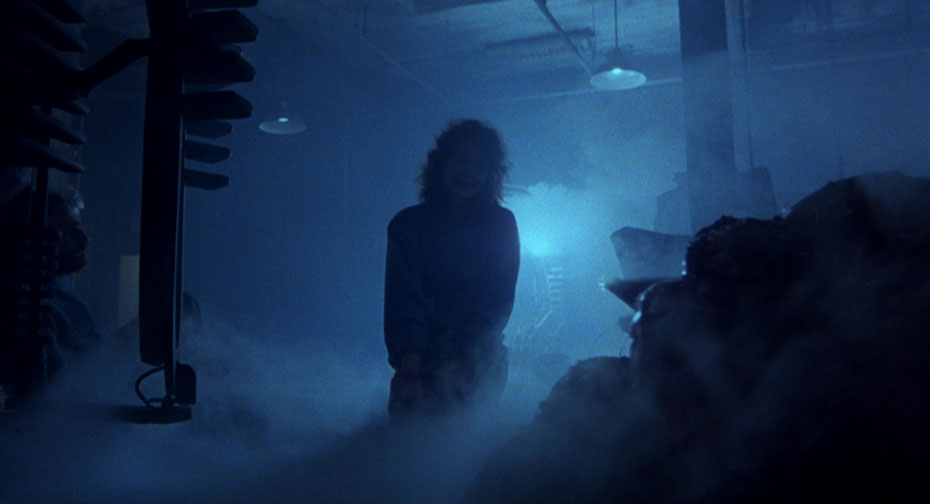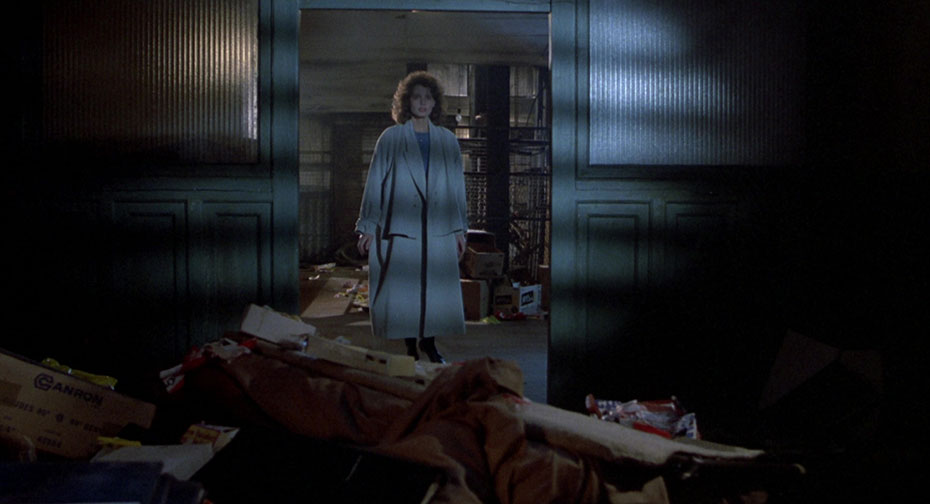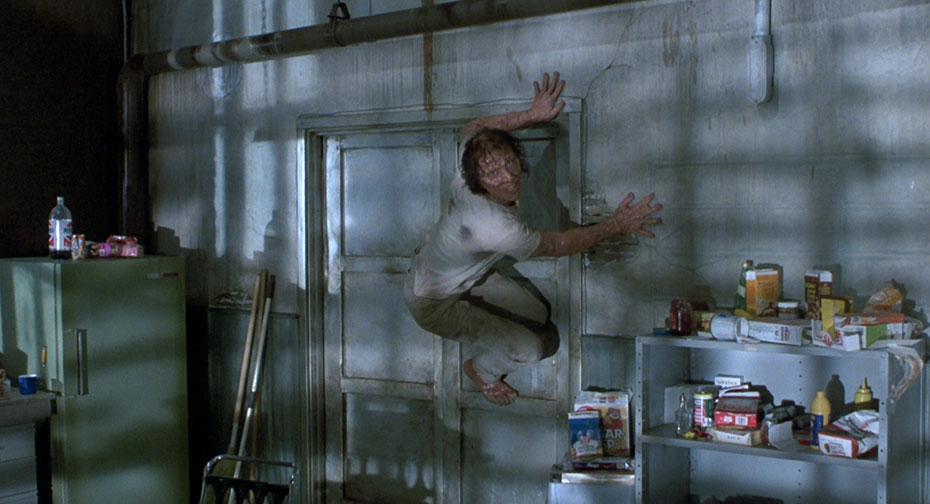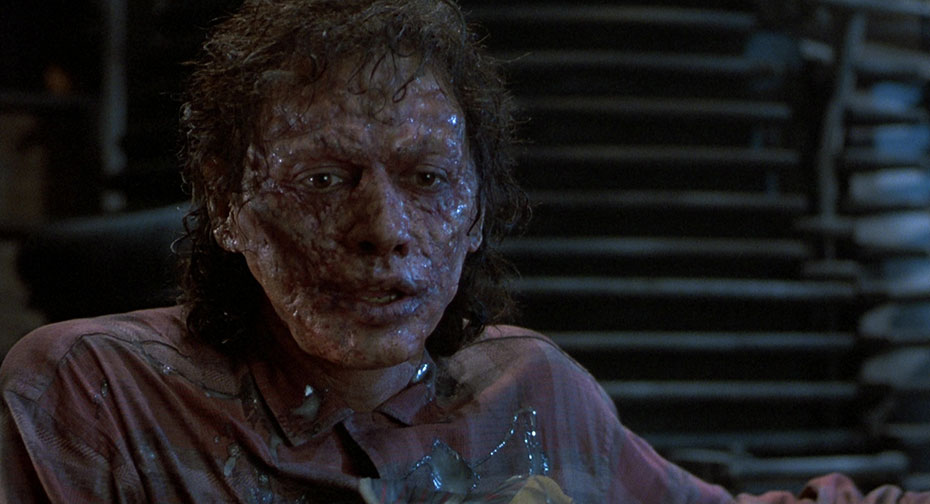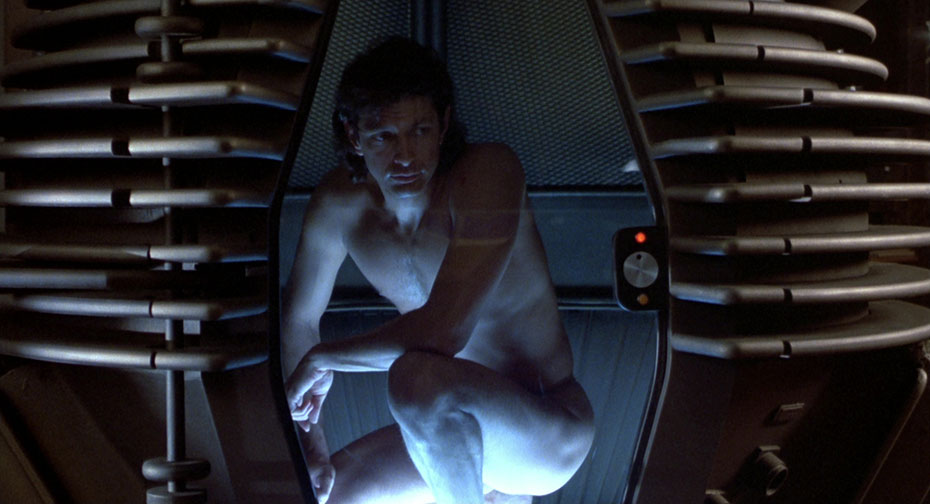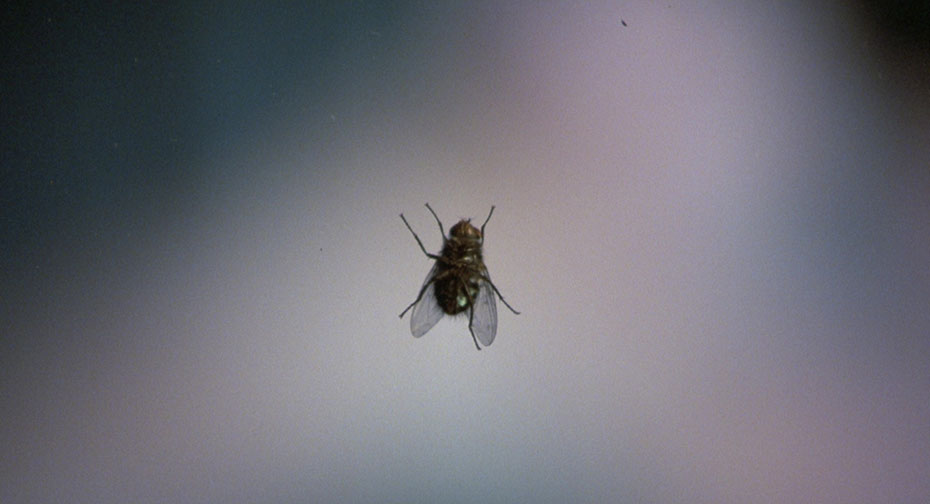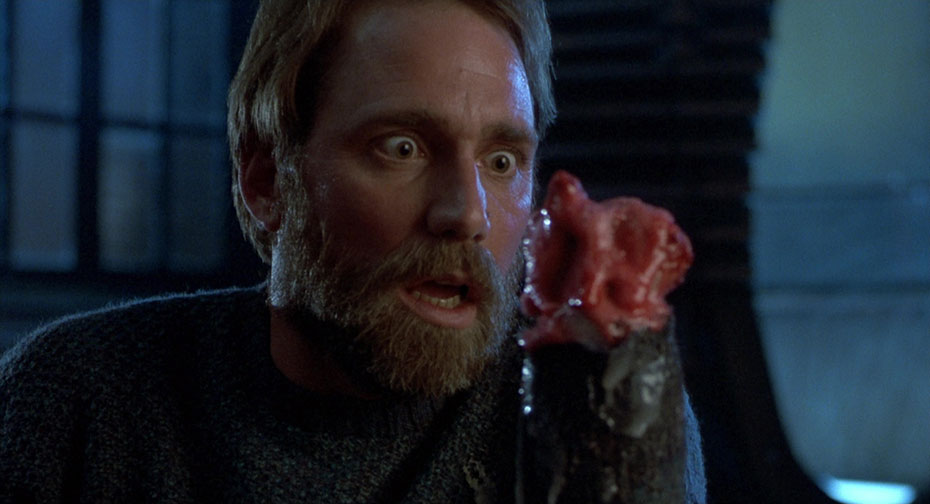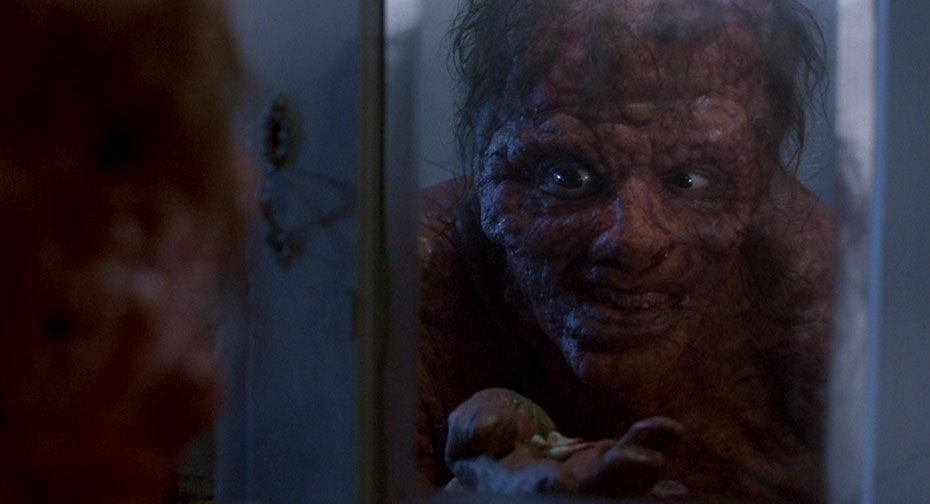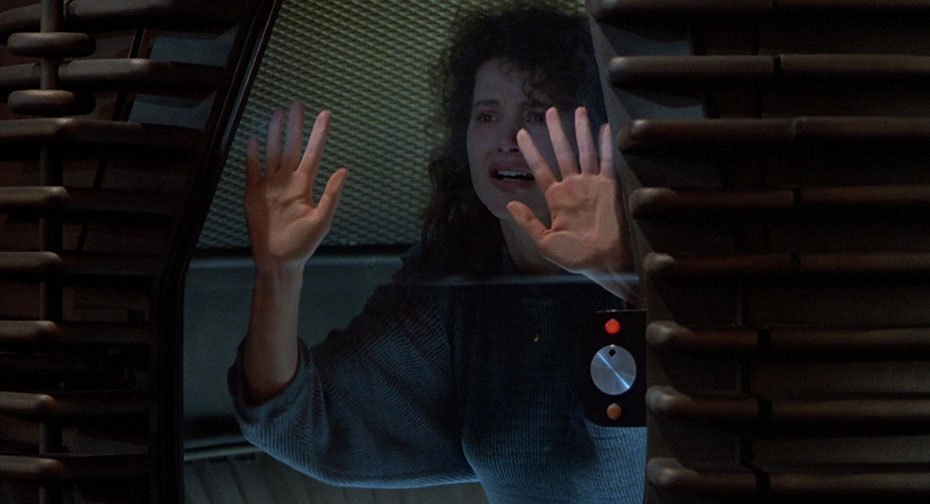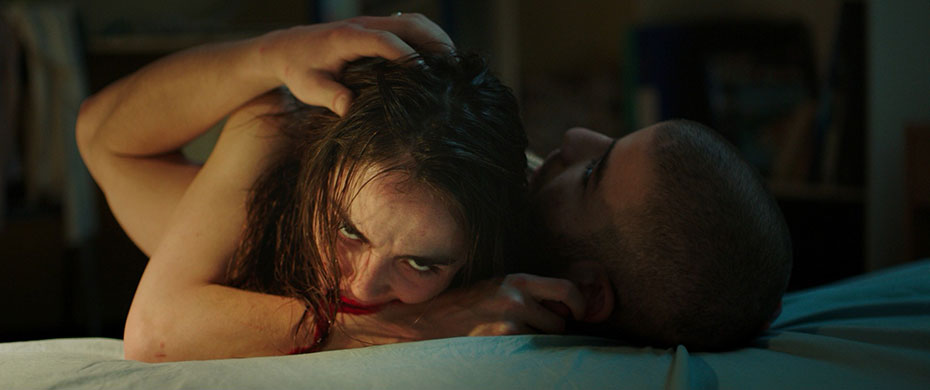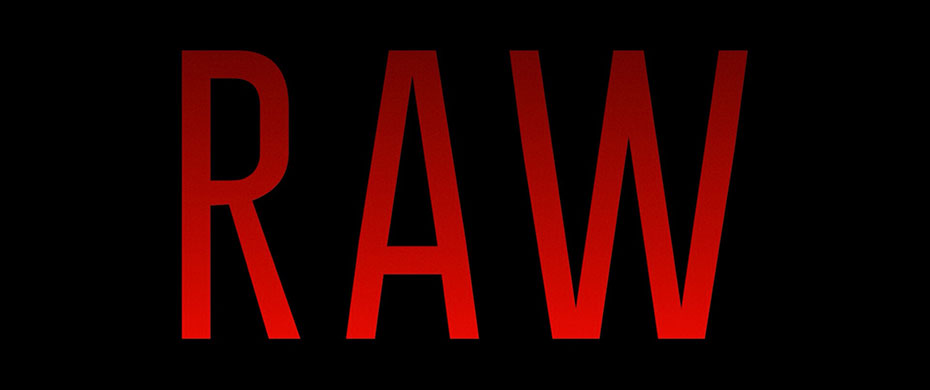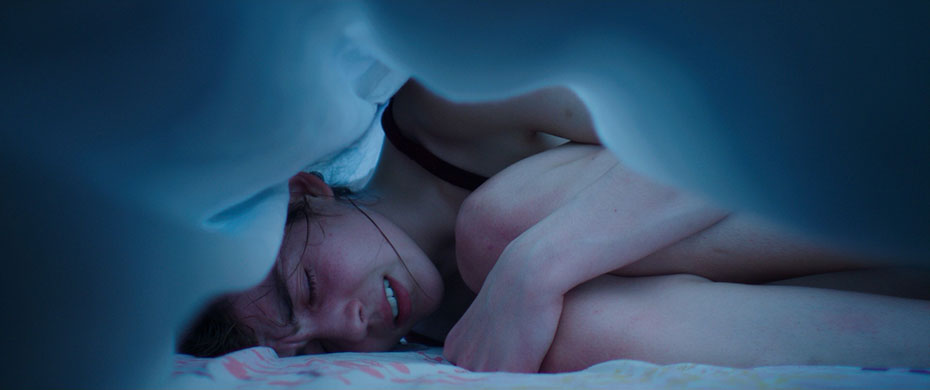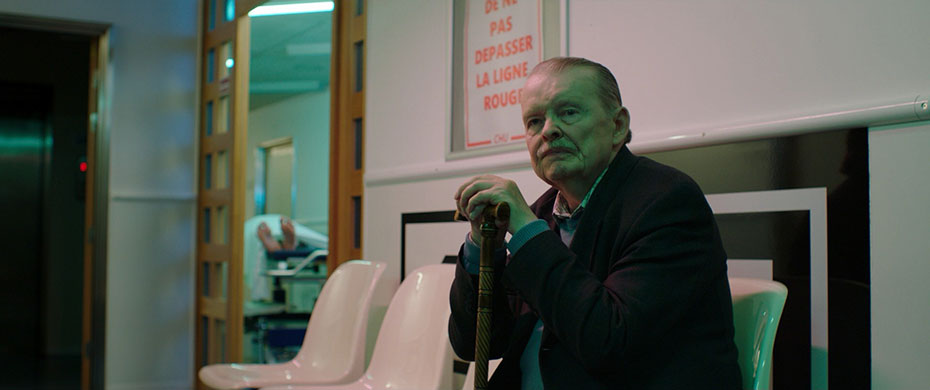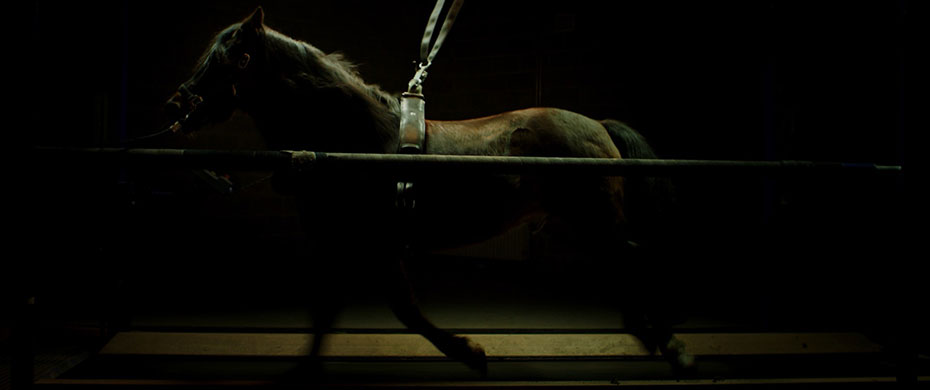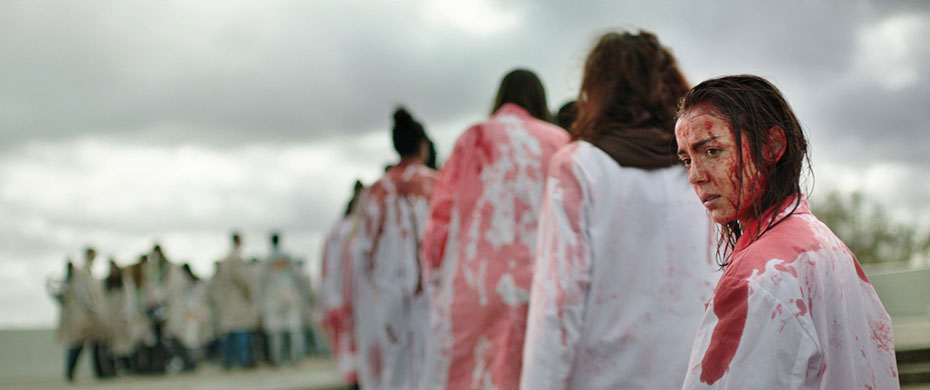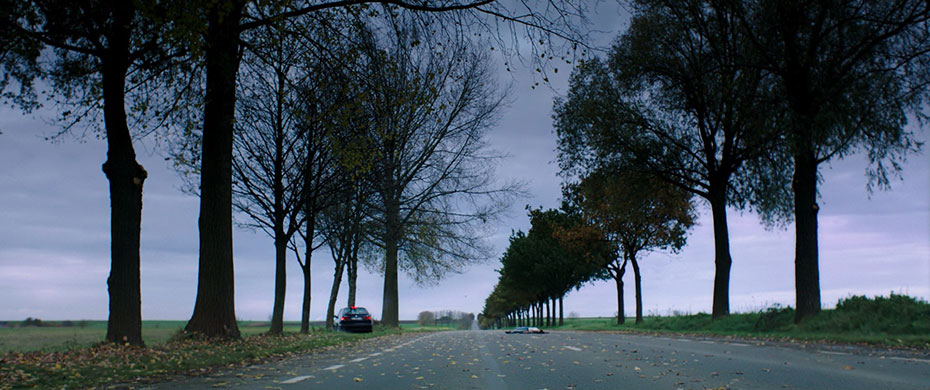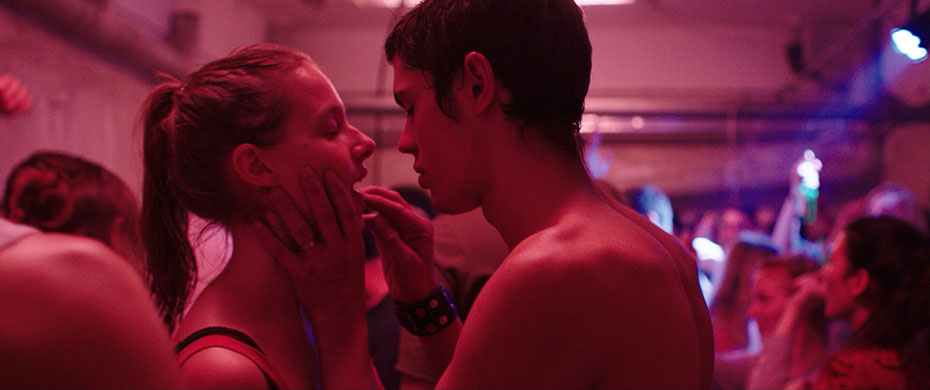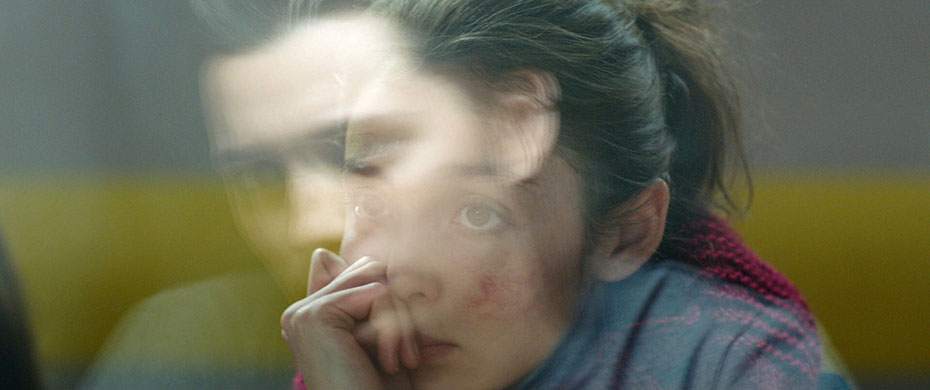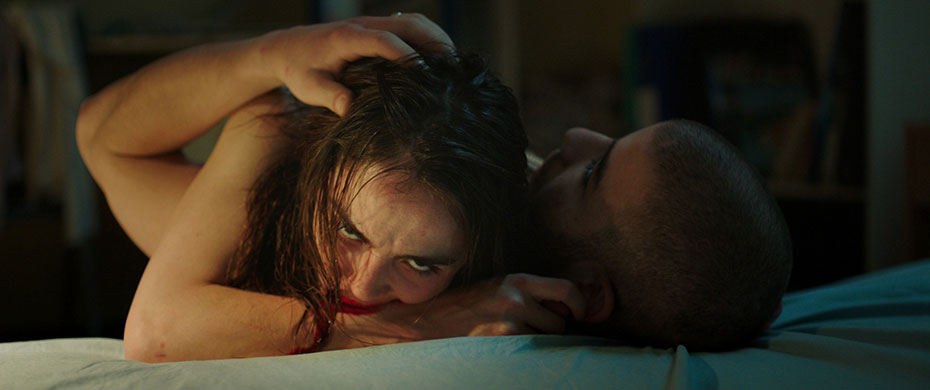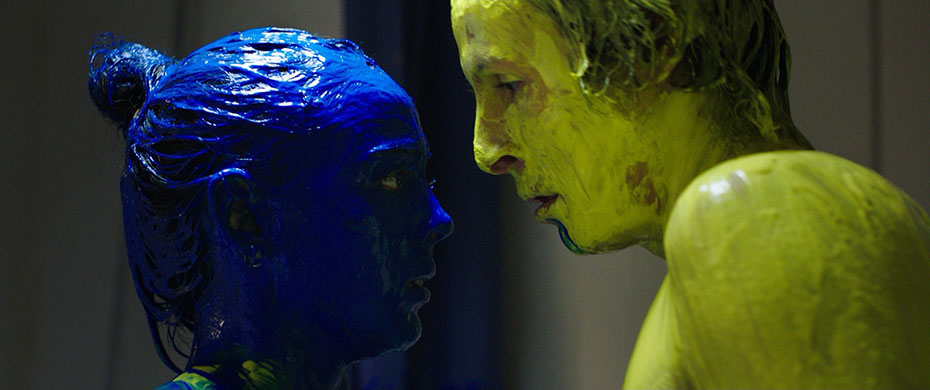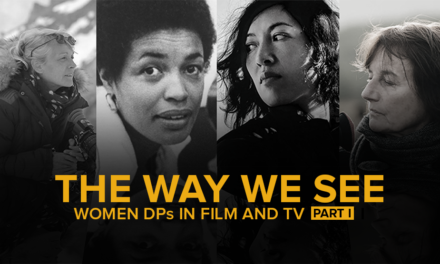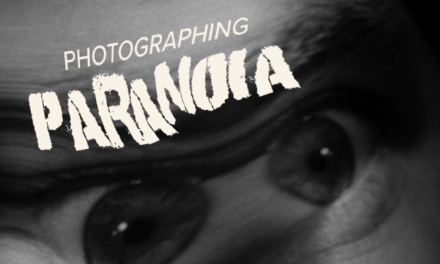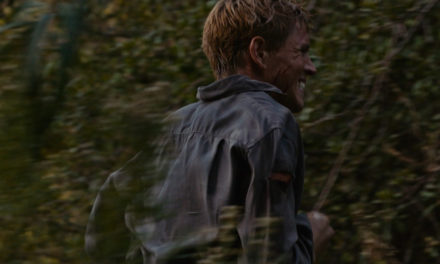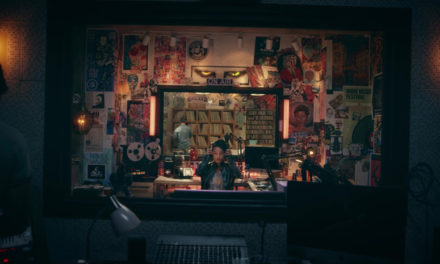THE TUESDAY DROP – 10/26
10.26.21 / New Shots
A QUIET PLACE (2018)
A QUIET PLACE follows a mother (Emily Blunt) and father (John Krasinski) who struggle to survive with their children in a post-apocalyptic world taken over by blind creatures with acute sense of hearing. Krasinski directed the film and wrote it with Bryan Woods and Scott Beck. It received several award nominations that included a Golden Globe for Best original score, an Academy Award for Best Sound Editing, and a Writers Guild of America Award for Best Original Screenplay. Instead of adding sound in post-production, Krasinski wanted to record real sounds while filming. Therefore, the crew had to freeze and be completely silent during takes for room tone and sound recording that would the be amplified in post-production. For scenes from the perspective of the deaf daughter, sound was completely removed except for the film score. The editors of the film suggested the organization of the shots to reflect the creatures’ perspectives (i.e., showing the creatures noticing a sound, and then showing the sound origin). The creatures themselves communicate through clicking sounds that the editors created using animal echolocation as inspiration.
BLADE (1996)
BLADE is the first installment of the Blade trilogy and Marvel’s first live action comic book adaptation. Wesley Snipes plays the role of Blade, a Dhampir, who together with his mentor and a hematologist fights against vampires. It was received positively by audiences, has gained a cult following, and sparked two sequels. Its success helped begin Marvel’s success and future MCU. The film was directed by Stephen Norrington and shot by Theo van de Sande on Clairmont and Hawk Anamorphic lenses. The film’s opening sequence where blood sprayed from sprinklers and revealed the vampires was an iconic but complicated feat to film. Large amounts of fake blood had to be used and Van de Sande strobe lights connected to the camera to give the blood a harsh feel to it and making the imagery sharp and detailed. He also created a new camera designed with an anamorphic lens equipped with a viewfinder to be able to do a lot of handheld action sequences.
DUNE (1984)
Written and directed by David Lynch, DUNE is set in the distant future and follows the conflict between rival families who seek the control of the harsh desert planet Arrakis, also knowns as Dune. Arrakis is the only source of the most valuable commodity in the universe, a drug called Spice. Spice allows for prescience and is vital to space travel. Starring a Lynch favorite Kyle MacLachlan and the lead singer of the band The Police, Sting, the film wasn’t a box-success but has developed a cult following over time. Although it was heavily criticized for its screenwriting, pacing, direction, and editing, it received praise for its visual effects, score, acting, and action. It received an Academy Award nomination for Best Sound. Citing his restrained artistic control and his lack of final cut, Lynch disowned the final film. The film is infamous for having a rough-cut film with a running time of three and a half hours, and for being a massive production. Shot by legendary cinematographer Freddie Francis, there were over 20,000 extras populating over 70 grand sets and representing 4 different planets. The detailed sets designed by Anthony Masters were intricate passageways and corridors that connected, instead of being the “normal” movie sets with doors that lead nowhere. Since Dune, dozens of directors and producers have tried and failed to remake the film since its release. Finally 2021 sees director Denis Villeneuve succeeding in getting this tale back to the screen.
THE NIGHT OF THE HUNTER (1955)
THE NIGHT OF THE HUNTER is a thriller film that focuses on a corrupt minister-turned-serial killer who attempts to con an unsuspecting widow for the $10,000 hidden by her executed husband. The film was the sole directorial effort by actor Charles Loughton and was based on the 1953 novel of the same name. It was selected for preservation in the U.S. National film Registry in 1992 and is widely considered one of the greatest films of all time. Instead of shooting traditional takes, Laughton had the crew slate at the beginning of each film reel and let the camera roll until the film ran out. This was so that he could direct the actors without having to reset the camera each time. The film’s incredible use of silhouette and shadows and its sharp contrasts in its cinematography, lighting, story, and actor performances have made it iconic. With cinematographer Stanley Cortez, Loughton shot the film in 36 days. Cortez shared, “Charles was a great student of D.W. Griffith… Before the picture started, we ran many of Griffith’s pictures, not with the idea of copying Griffith but because Charles wanted to learn from him. He wanted to do certain things Griffith did.”
SUSPIRIA (2018)
SUSPIRIA is a supernatural psychological horror film inspired by the 1977 Italian film directed by Dario Argento. The film was directed by Luca Guadagnino and shot by Sayombhu Mukdeeprom, his collaborator from Call Me By Your Name. Set in 1977, an American girl (Dakota Johnson) from a Mennonite and abused background enrolls at a prestigious dance academy in Berlin. Her arrival coincides with the disappearance of a student who vanished after revealing the school’s matrons are a coven of witches. The film was shot on 35mm on a Kodak Vision3 500T 5219 without correction filters. The 70’s visual style was achieved with slow motion and snap zooms. This version differed from the original, as it had a bleak “winter” evil dark look lacking primary colors. Red was used to symbolize imminent danger, with the red lighting and hues in the film created in post-production to be able to control the sections where red was added. Speaking on the film’s lighting, Mukdeepro shared “If the director says the mood is dark, I will make it dark… It will be properly exposed; I’m just working at the lower part of the curve.”
TWILIGHT (2008)
TWILIGHT is a romantic young adult fantasy film based on the novel of the same name written by Stephanie Meyer. It’s the first installment of the Twilight Saga series. It follows Bella Swan (Kristen Stewart), who moves from Phoenix, AZ to live with her father in Forks, Washington. There she meets and develops a romance with Edward Cullen (Robert Pattinson), a vampire, who along with his family must fight to keep Bella safe from a coven of evil vampires. The Catherine Hardwicke directed film is well known for its “blue tint” tone made famous by DP Elliot Davis. The blue and grey tones of the film fit with the atmosphere of Forks and the pale cold complexion of the vampires. The baseball scene was a choreographed dance between the cinematographer, stunt coordinator and editor of the film. Actors had to be rigged to wires on a rig during the running and mid-air clash between Edward and his brother Emmett, with the flash of lightning at the exact moment of contact added later with VFX. For the entrance of the evil vampires to the field, actors had to walk on a plexiglass “magic carpet”, like moving airport walkways, that was erased later in post. This made them appear as if they were gliding at vampire speed.
RELIC (2020)
RELIC follows Kay and her daughter Sam who travel back home to try to find Kay’s missing mother Edna. When they arrive, not only do they find the house locked from the inside, but they discover a haunting presence over the house that takes over Edna’s mind. The film premiered at the Sundance Film Festival and was directed and co-written by Natalie Erika James with Christian White and shot by Charlie Sarroff. The production design team used the power of suggestion to create the film’s haunted house. Rooms and hallways were never fully lit to give off the creepy feeling of something lurking in the shadows. Items in the boxes kept in the hoarding room were randomly grouped to emulate Edna’s disorganized mind. The mold in the house was used almost as if it was creeping in to claim its territory, as a metaphor for Edna’s dementia. The house’s main three areas of the house used in filming (the bathroom, hoarding room, and labyrinth) were all built on soundstages, and small hints were put throughout to show the house wasn’t as taken care of as it seemed (i.e., a bowl of rotting fruit).
VIDEODROME (1983)
VIDEODROME is set in early 1980’s Toronto and follows the CEO (James Woods) of a small UHF television station who stumbles upon a broadcast of a plotless torture session named Videodrome. As he discovers the signal’s true source, he uncovers the deception and mind control conspiracy behind it, making him lose touch with reality thanks to bizarre hallucinations. Directed by David Cronenberg, it was the first of his films to gain backing by any major Hollywood studio. Over time it’s become a cult classic and one of Cronenberg’s best as a key example of the body horror genre. Although it wasn’t a box office monetary success, it received praise for its direction, actor performances, and psychosexual themes. Its groundbreaking visual effects were created by Rick Baker, such as the breathing tv screen that was created using a video projector and rubbery sheet of dental dam that Woods could touch and caress. Following his work on this film, Woods swore off doing another effects driven film due to the fact that he had to be fitted into a couch with chest-slit effects glued onto him for scenes where his character’s chest opened.
THE FLY (1986)
THE FLY tells the story of an eccentric scientist (Jeff Goldblum) who slowly turns into a fly-hybrid creature after one of his experiments goes wrong. It was directed and co-written by David Cronenberg, and loosely based on the 1957 short story and the 1958 film of the same name. It became the largest commercial success of Cronenberg’s career, and it won an Academy Award for Best Makeup. The film’s praise originated from Goldblum’s performance and the visual effects. Goldblum had to have five pounds of makeup applied up to five hours each day to achieve the fly transmutation throughout the film. The Fly’s acidic vomit was made of a mixture of milk, eggs, and honey. One of the most challenging visual effects on the film was the melting of the hand of the character played by John Getz. It was ultimately achieved in the same way as the melting mug in Raiders of the Lost Ark, by molding the mutilated hand and placing it beneath a sculpture of a healthy hand. The healthy hand sculpture was then melted under the hot set lights, paired with a hairdryer while the Arriflex camera filmed at a low speed.
RAW (2016)
RAW is a coming-of-age horror drama film about a young woman (Garance Marillier) beginning her first semester at veterinary school. She has been a vegetarian all her life, but suddenly starts to have an insatiable craving for meat and flesh after being forced to eat rabbit kidneys as part of a hazing ritual. It screened at the International Critics’ Week section at the 2016 Cannes Film Festival, where it won the FIPRESCI Prize. The film has scenes so intense and gruesome that viewers reportedly left or fainted while watching. Director Julia Ducournau preferred to use practical effects whenever possible, and only a few in post. To her, practical effects are very different because they can make audiences feel something, even if they’re not fooled completely or look as precise as CGI. The film was shot in 37 days on an Arri Alexa Mini with rehoused vintage spherical lenses, instead of anamorphic lenses, to achieve a raw image that showed the pores of the skin, dark rings under the eyes, and drops of sweat.

